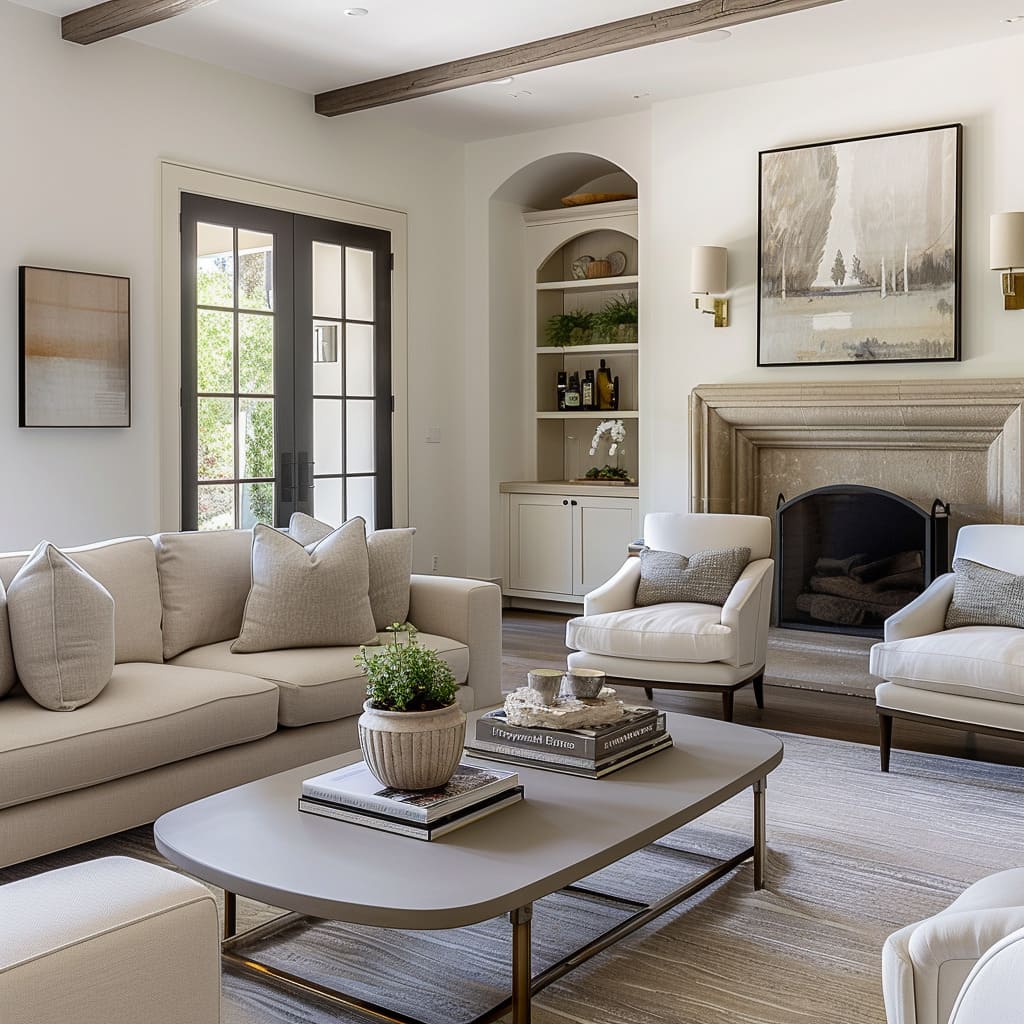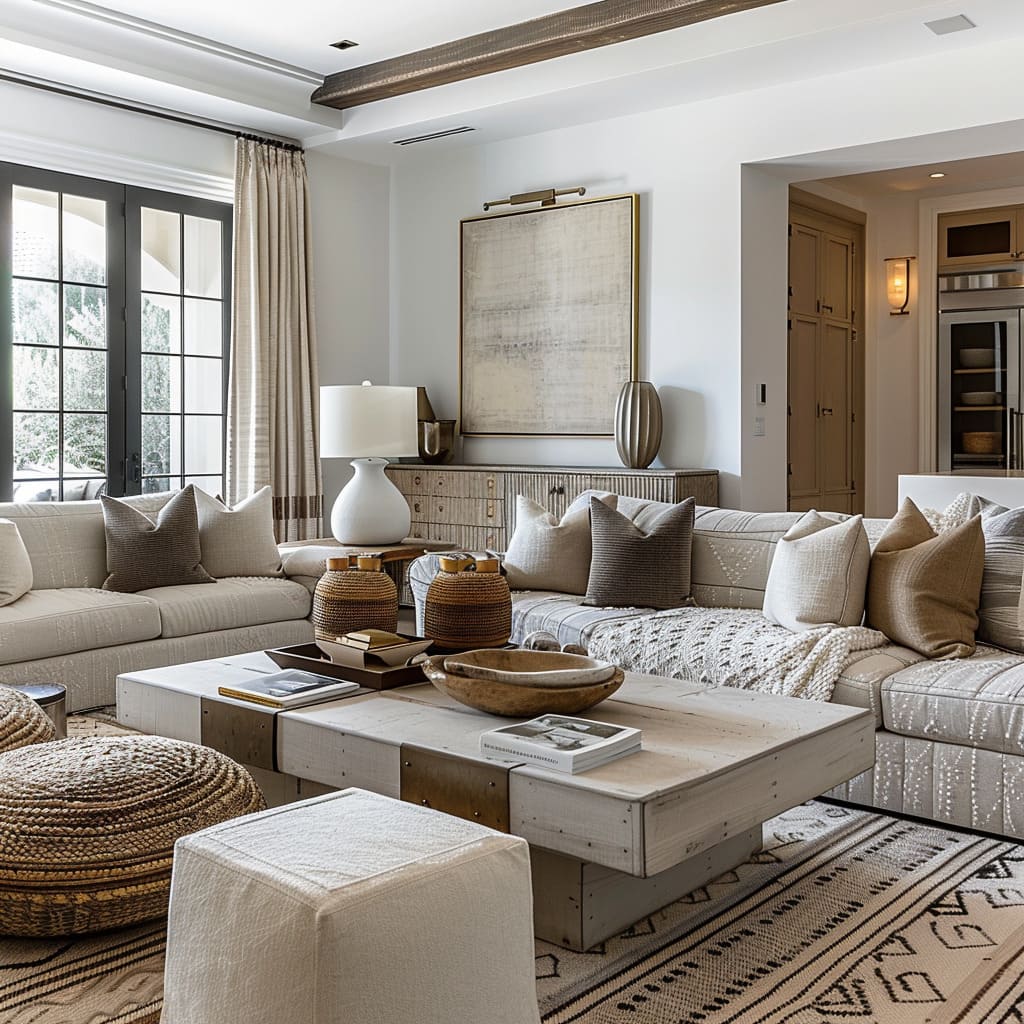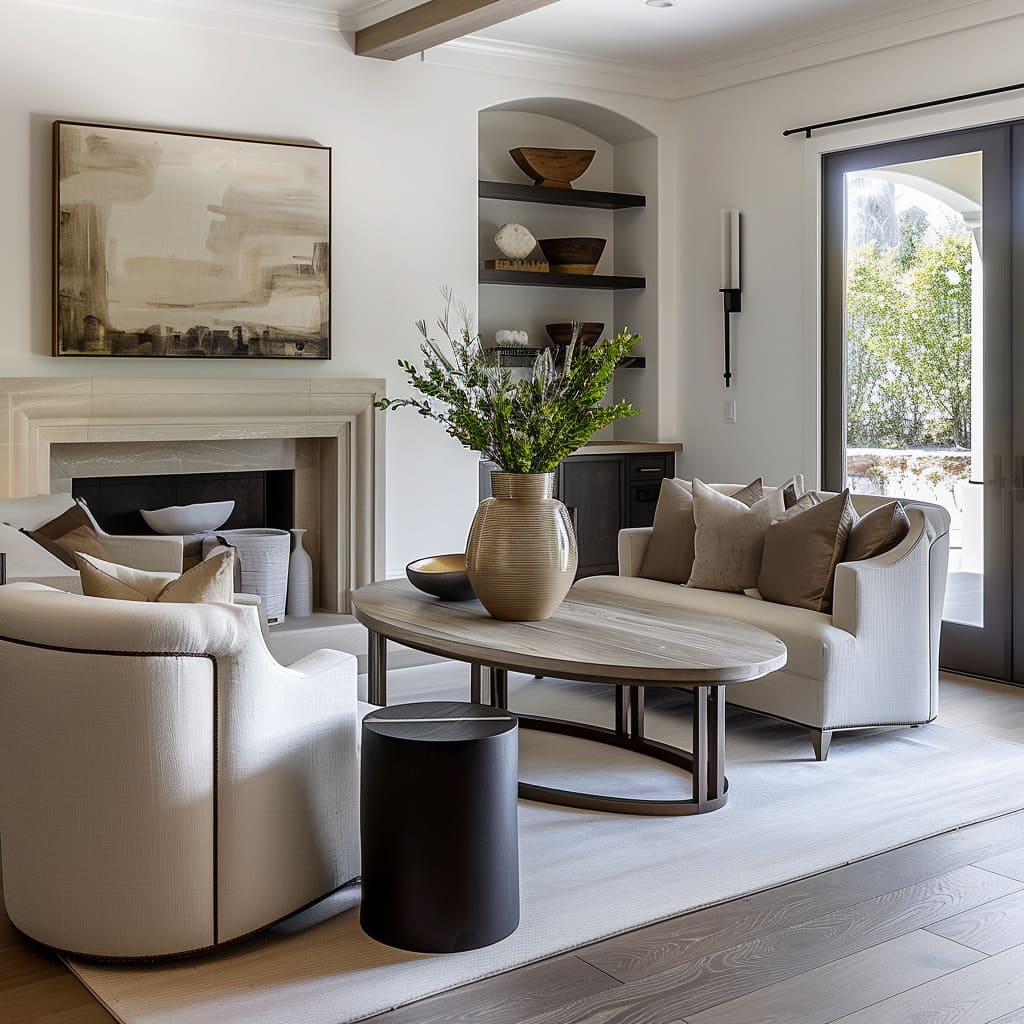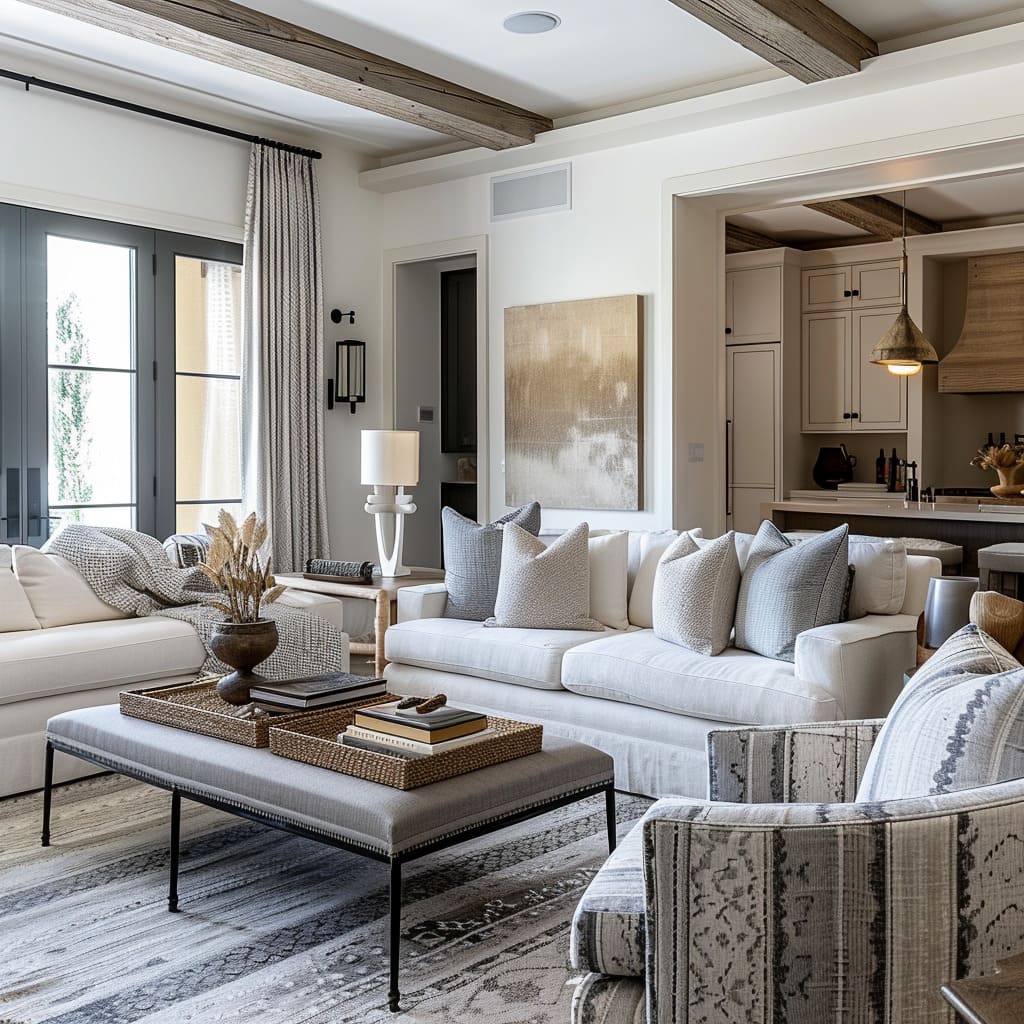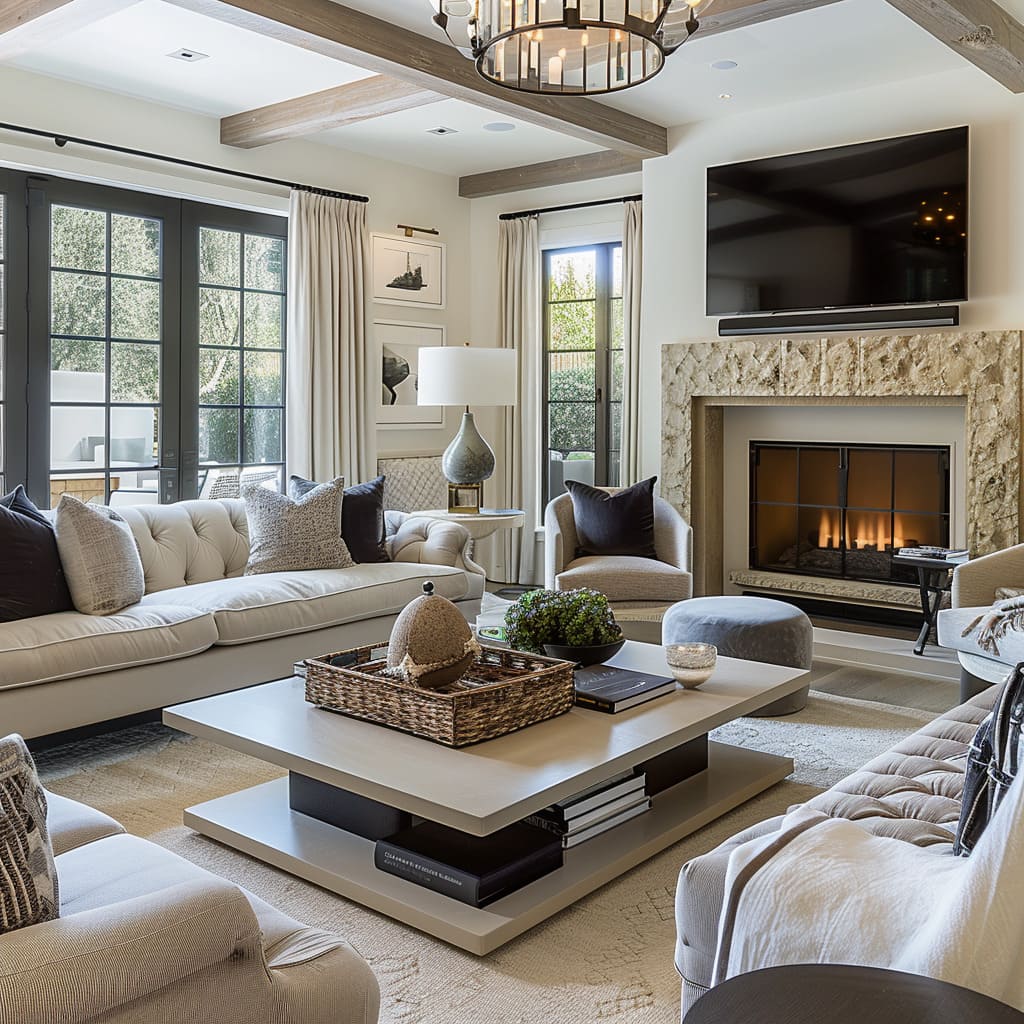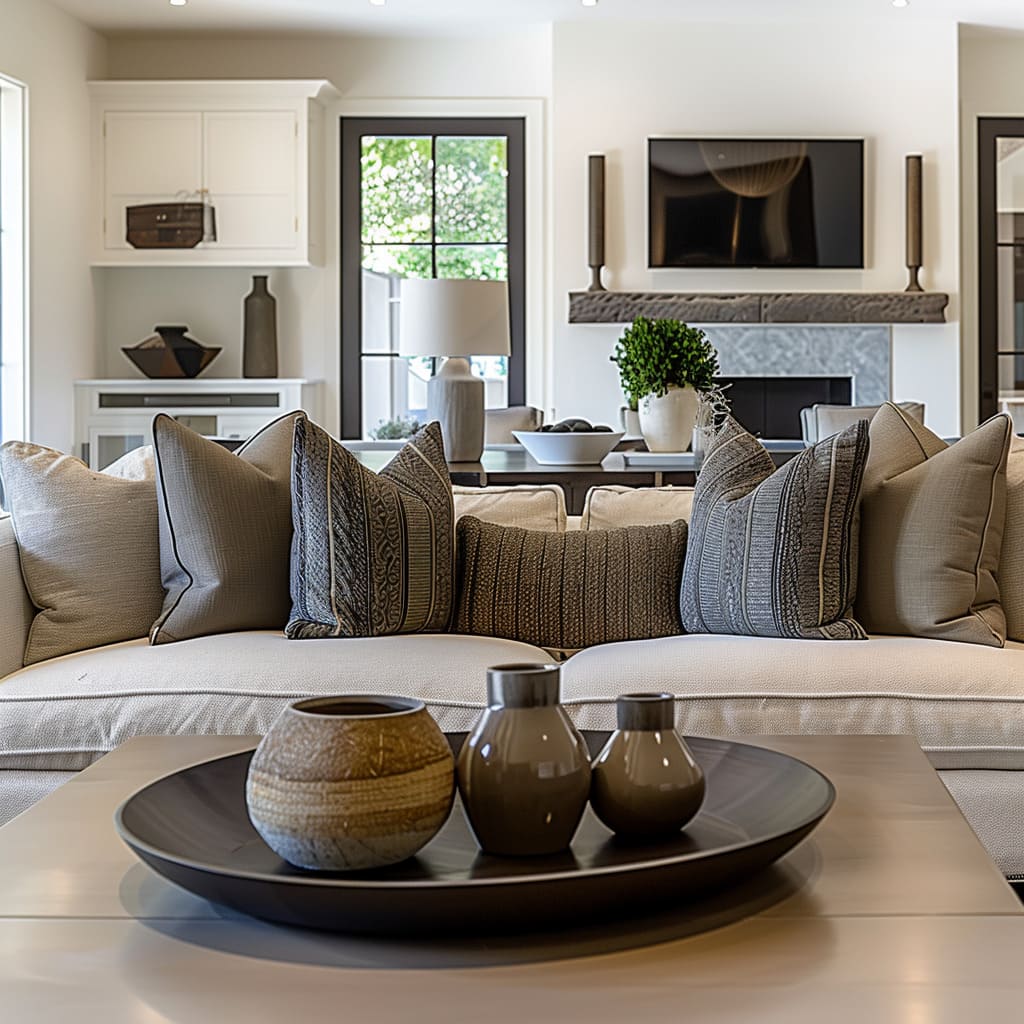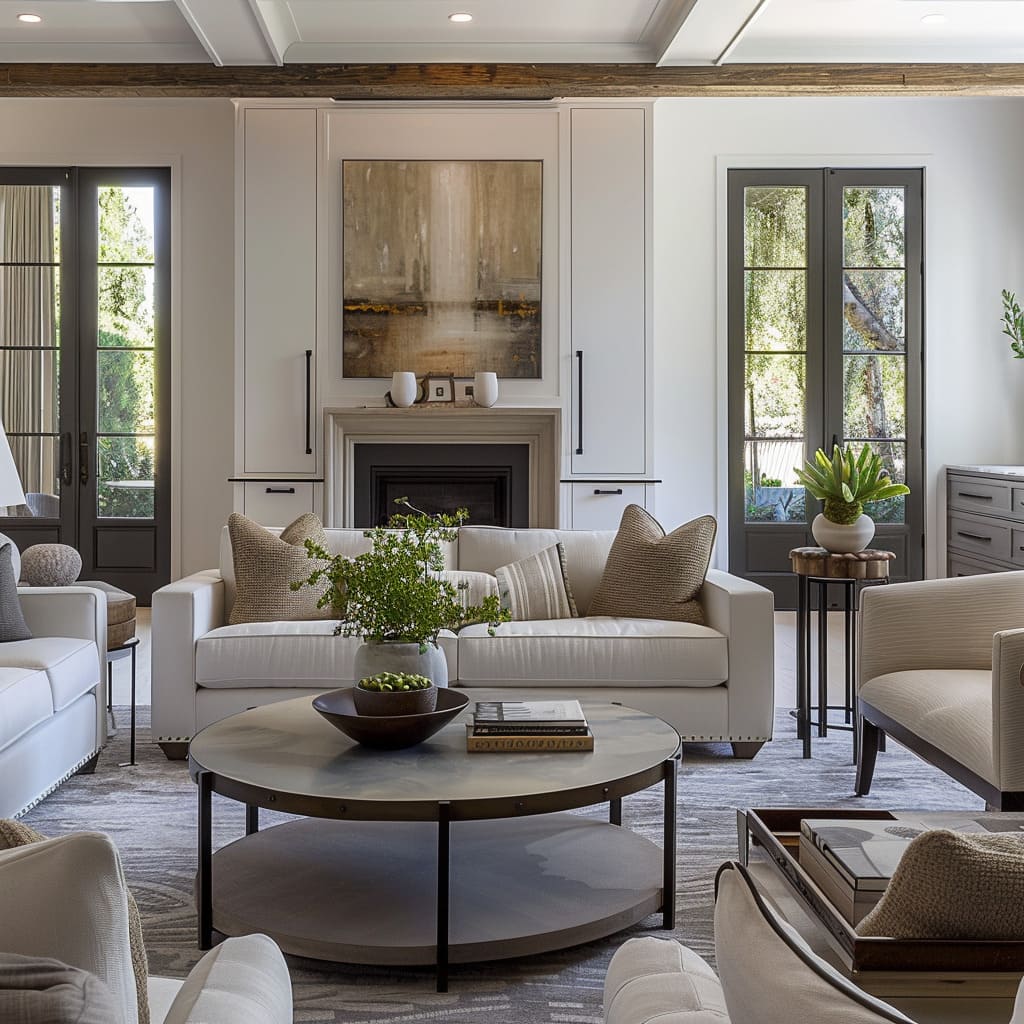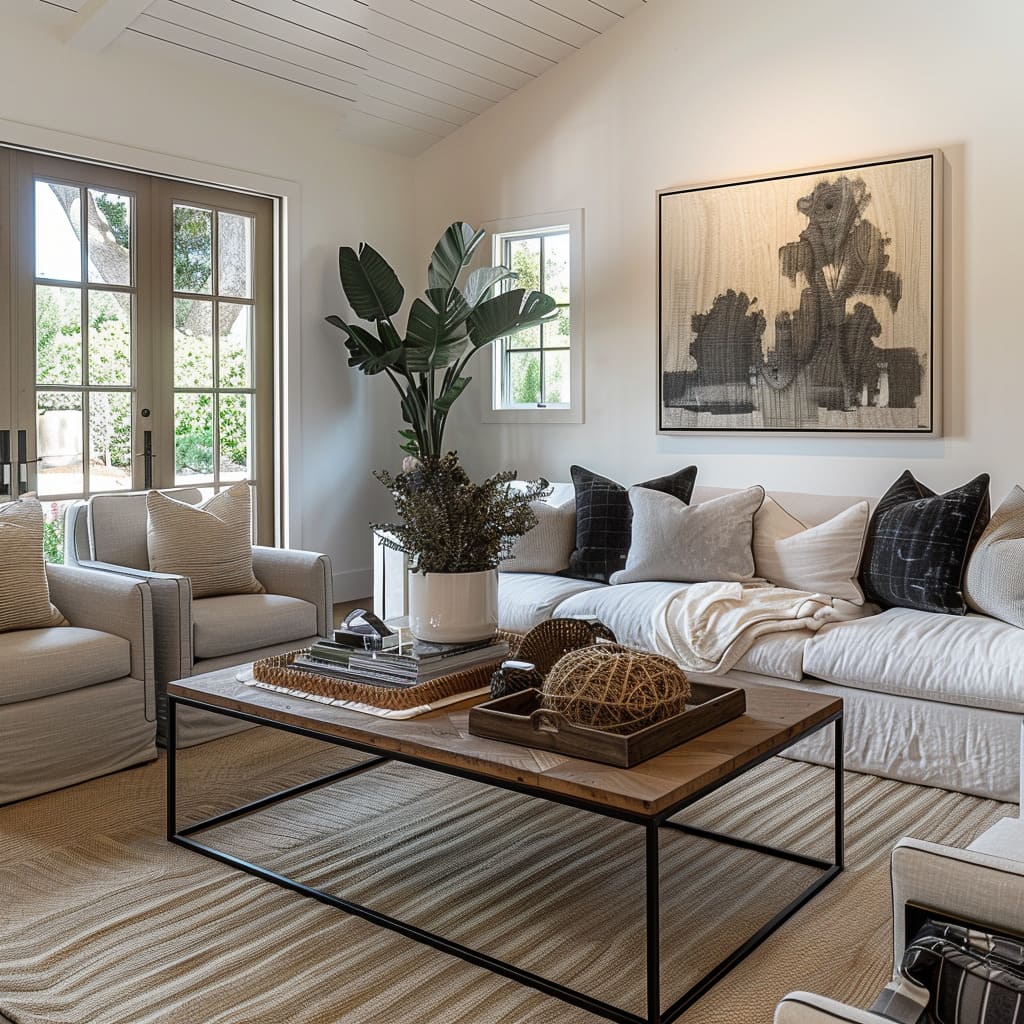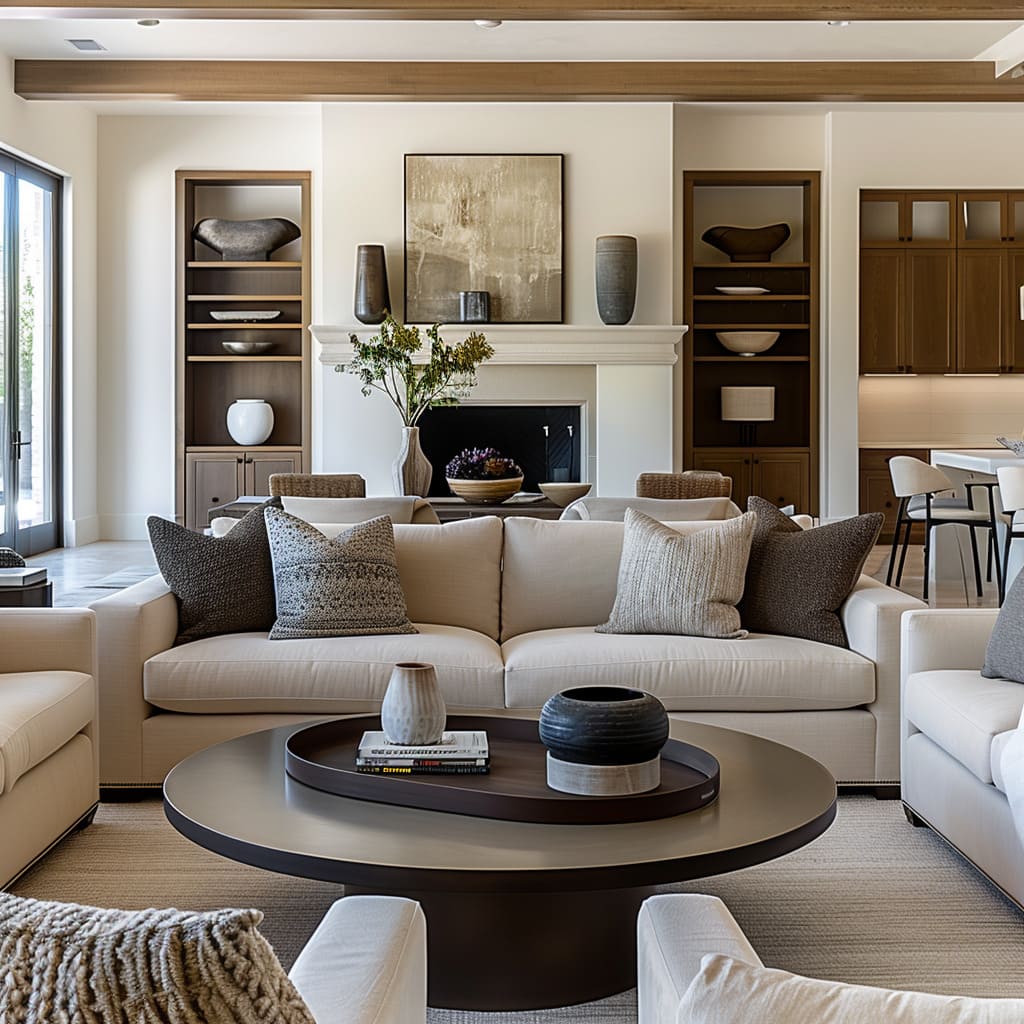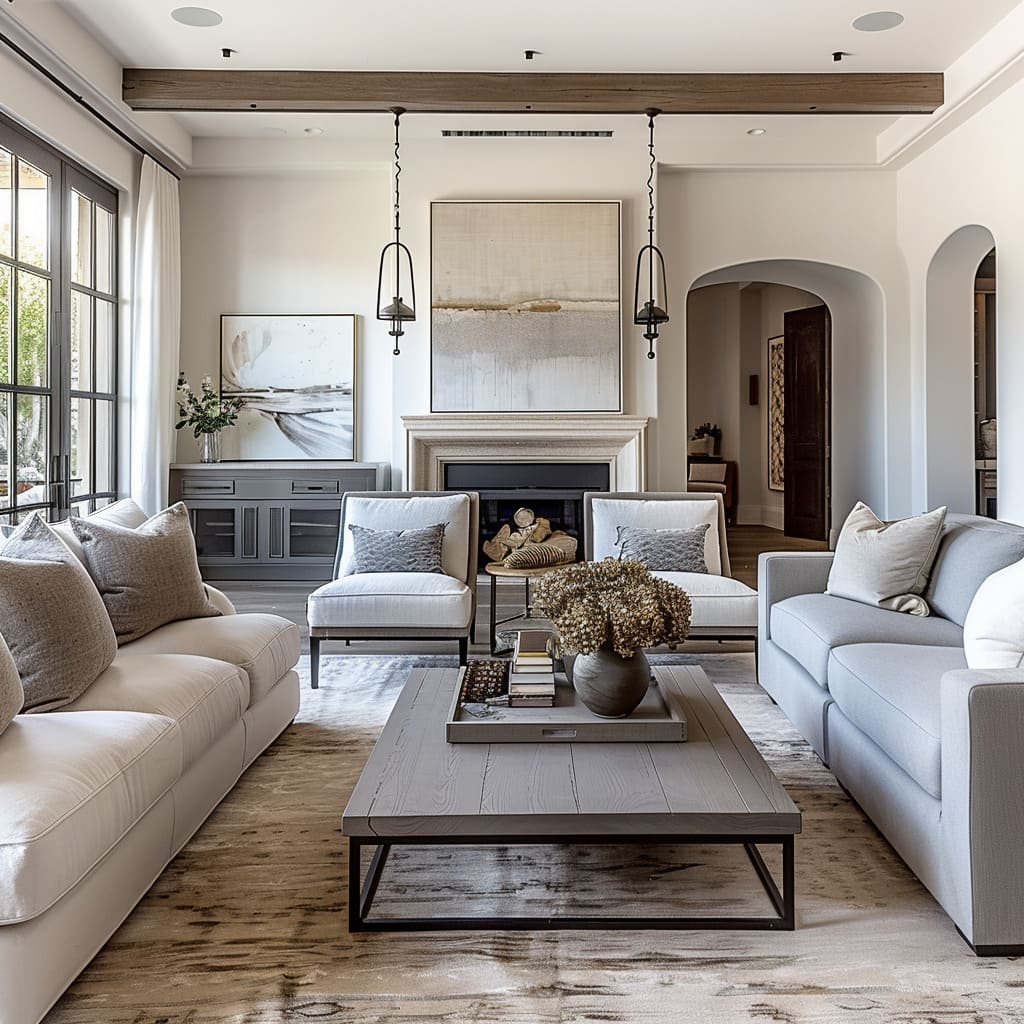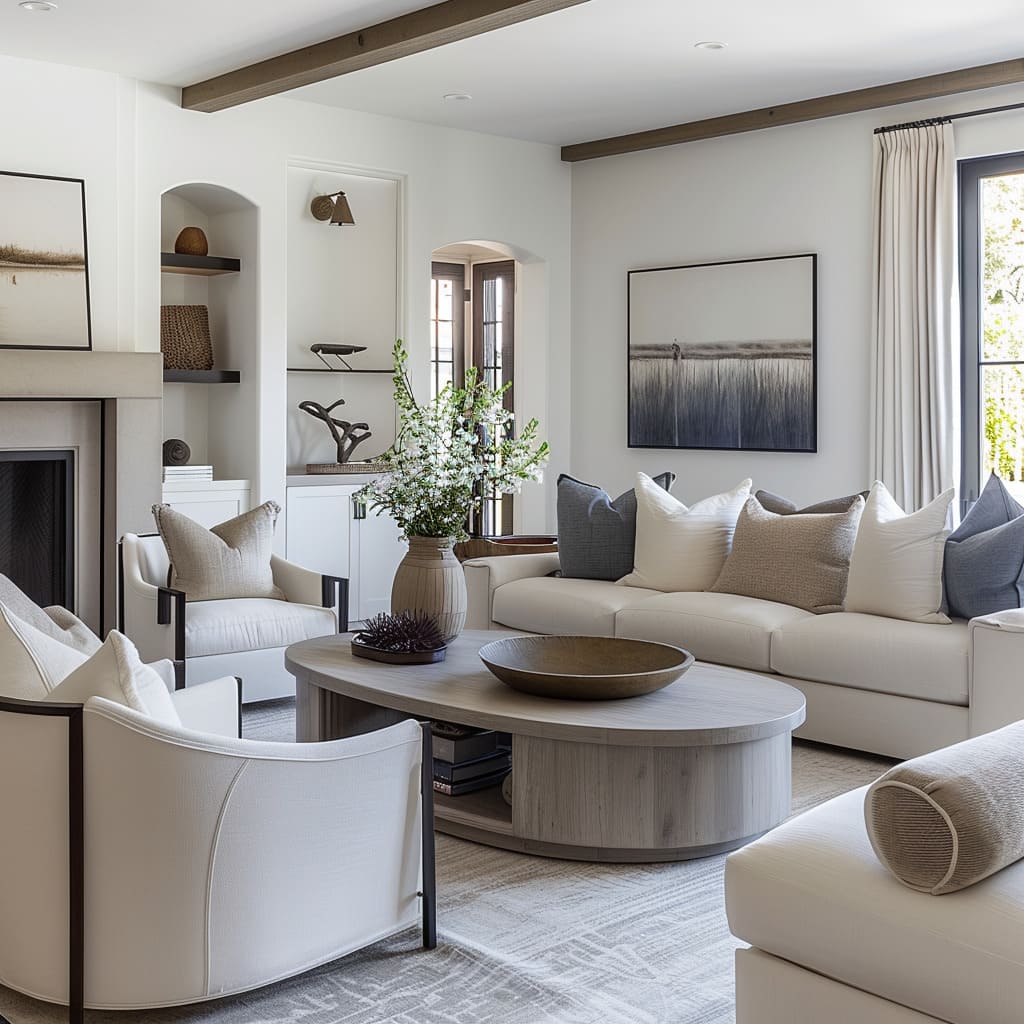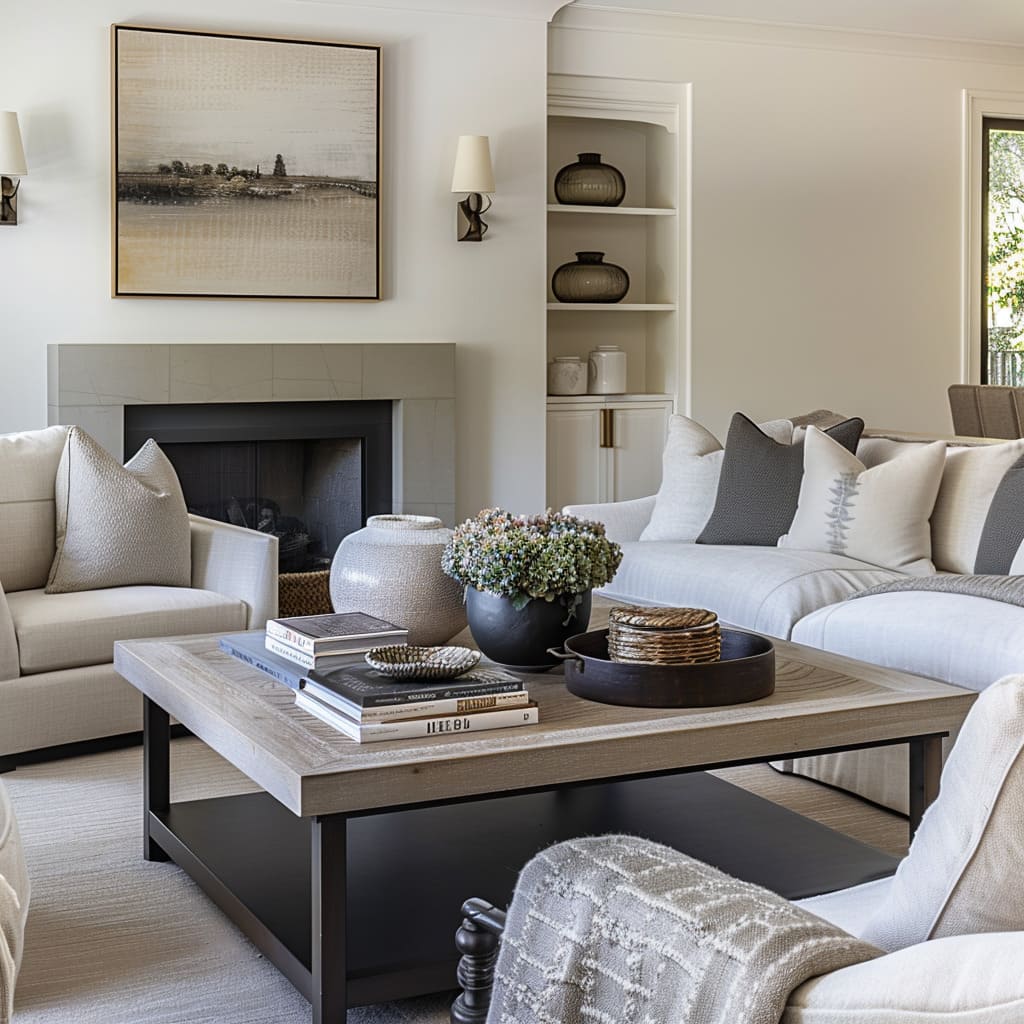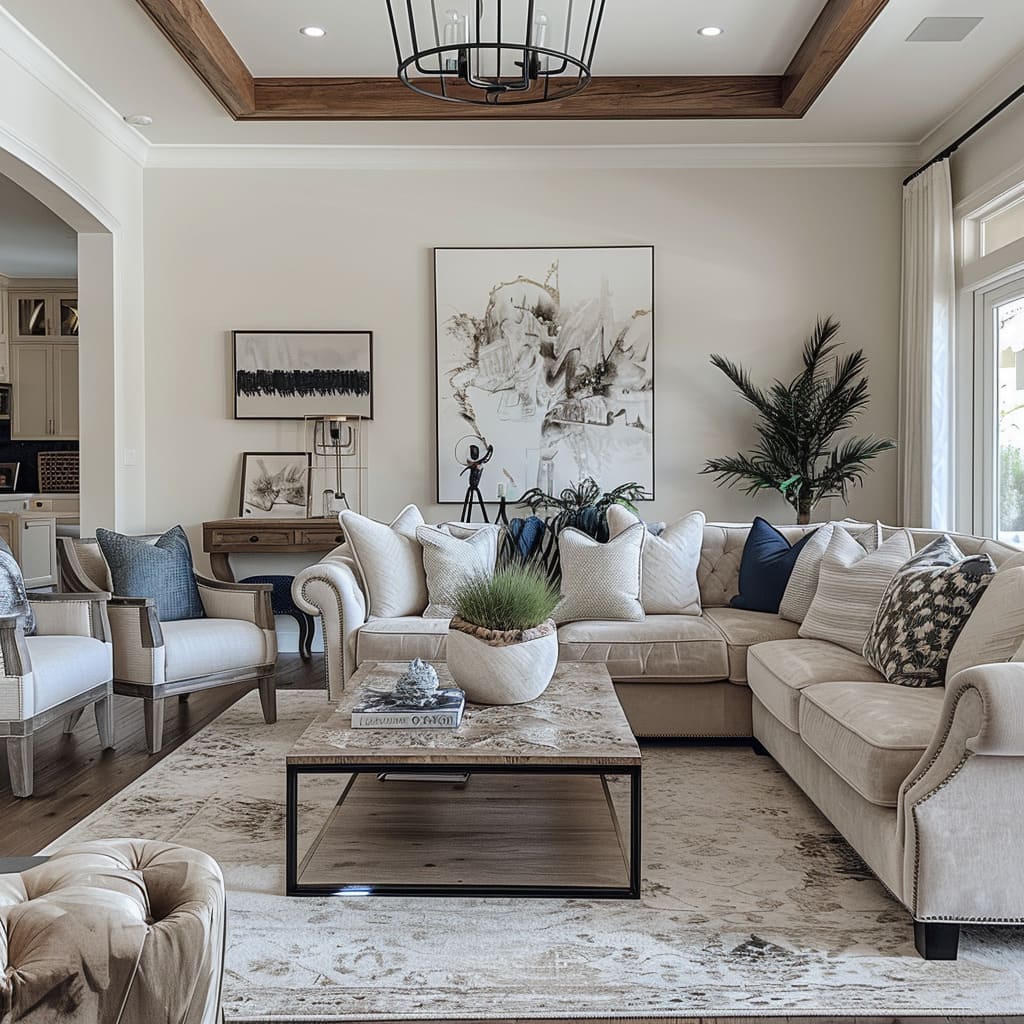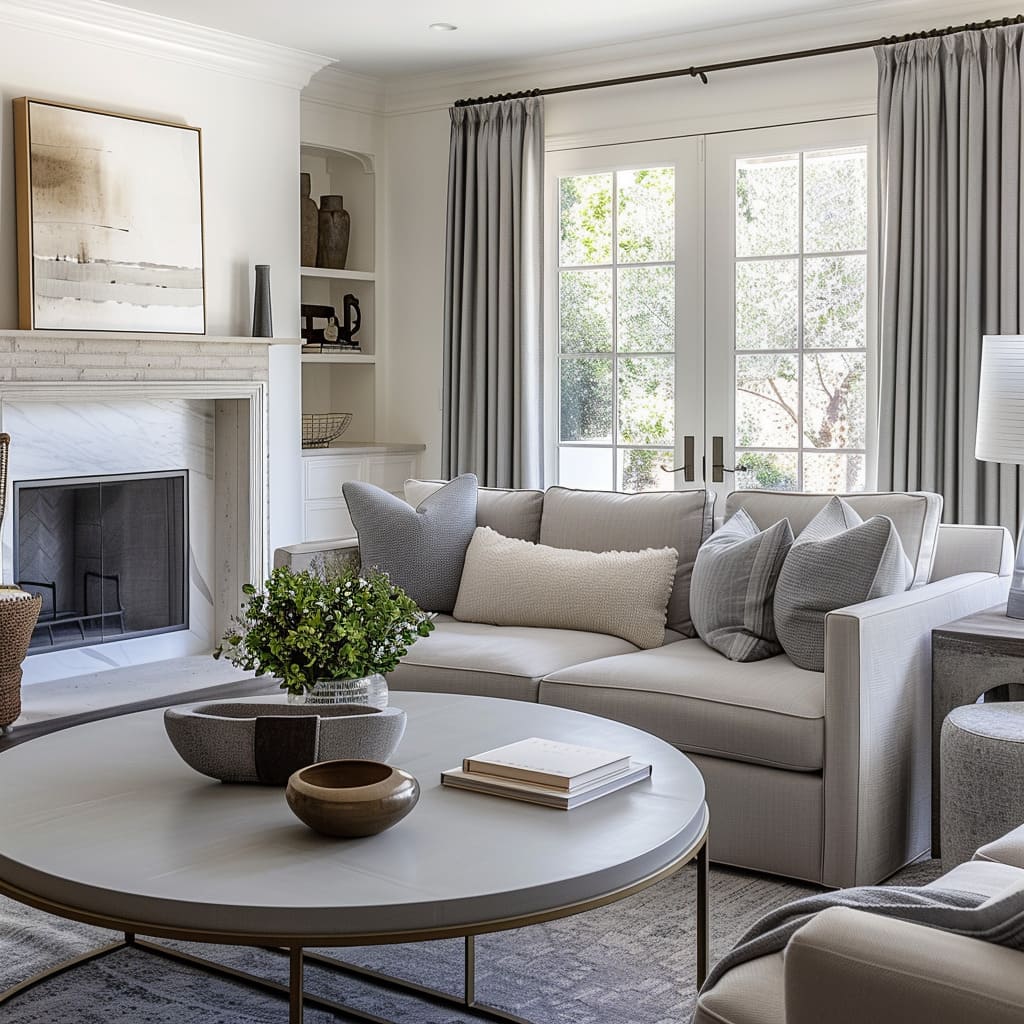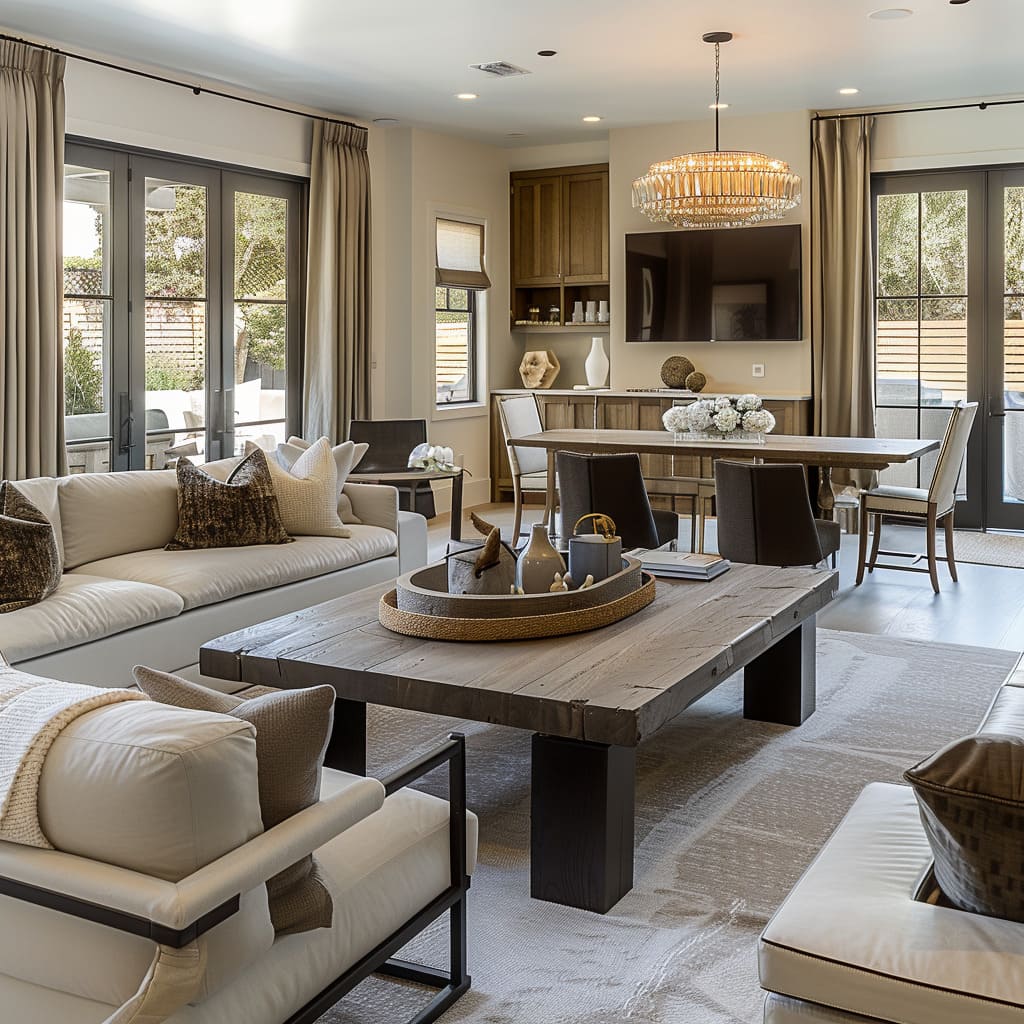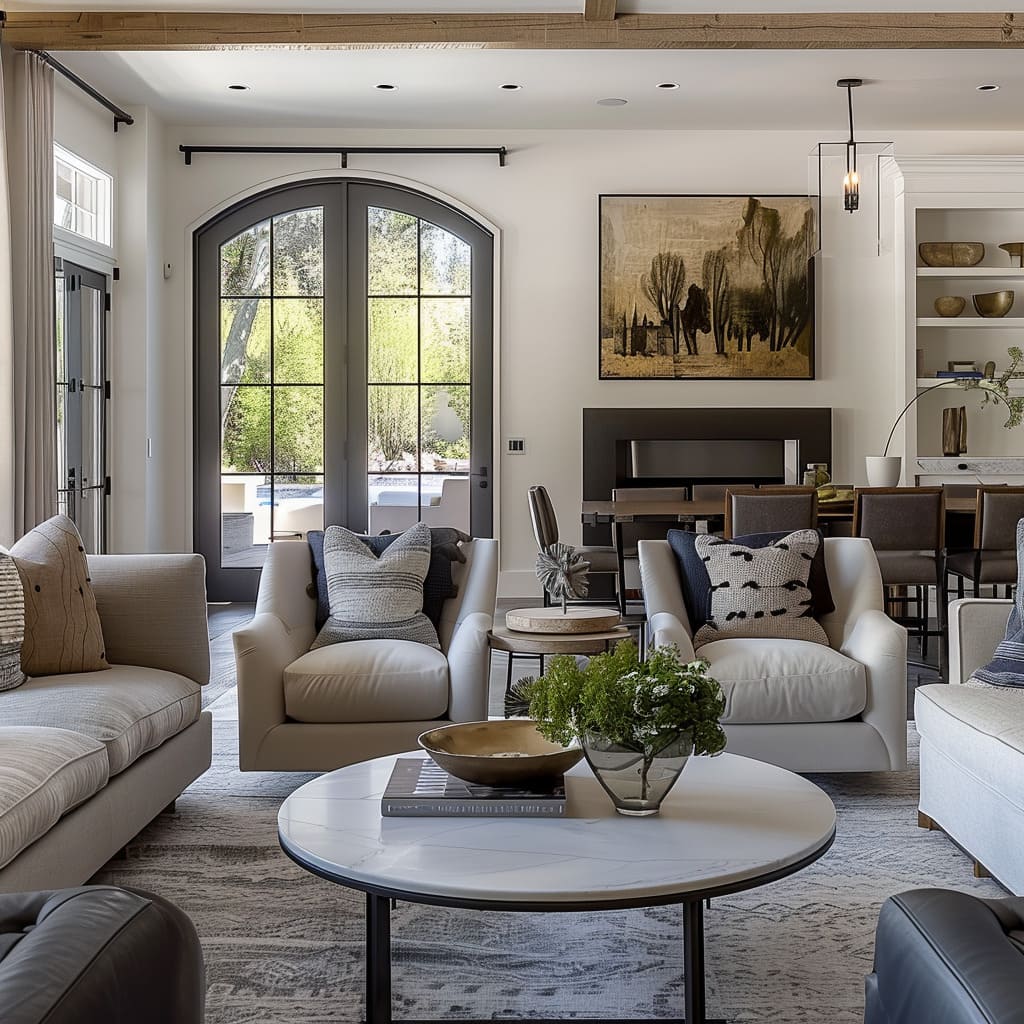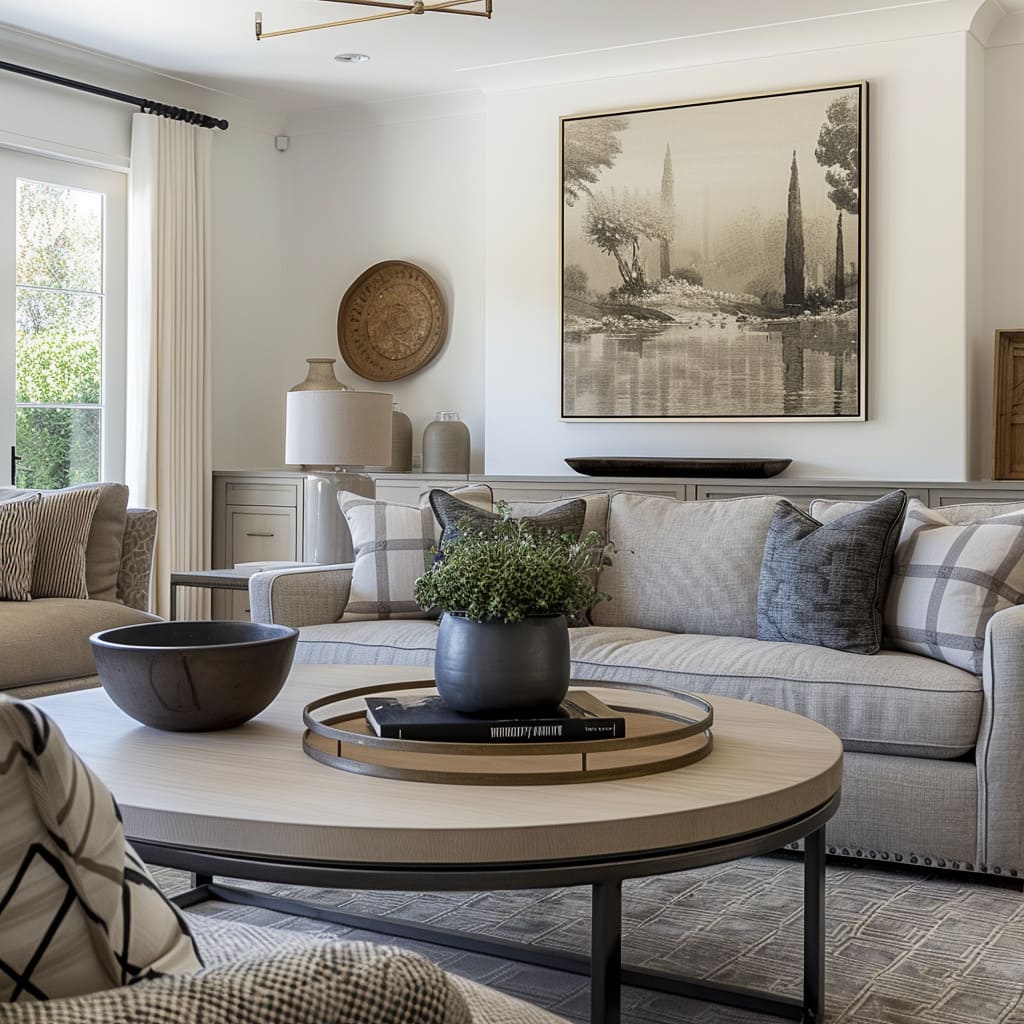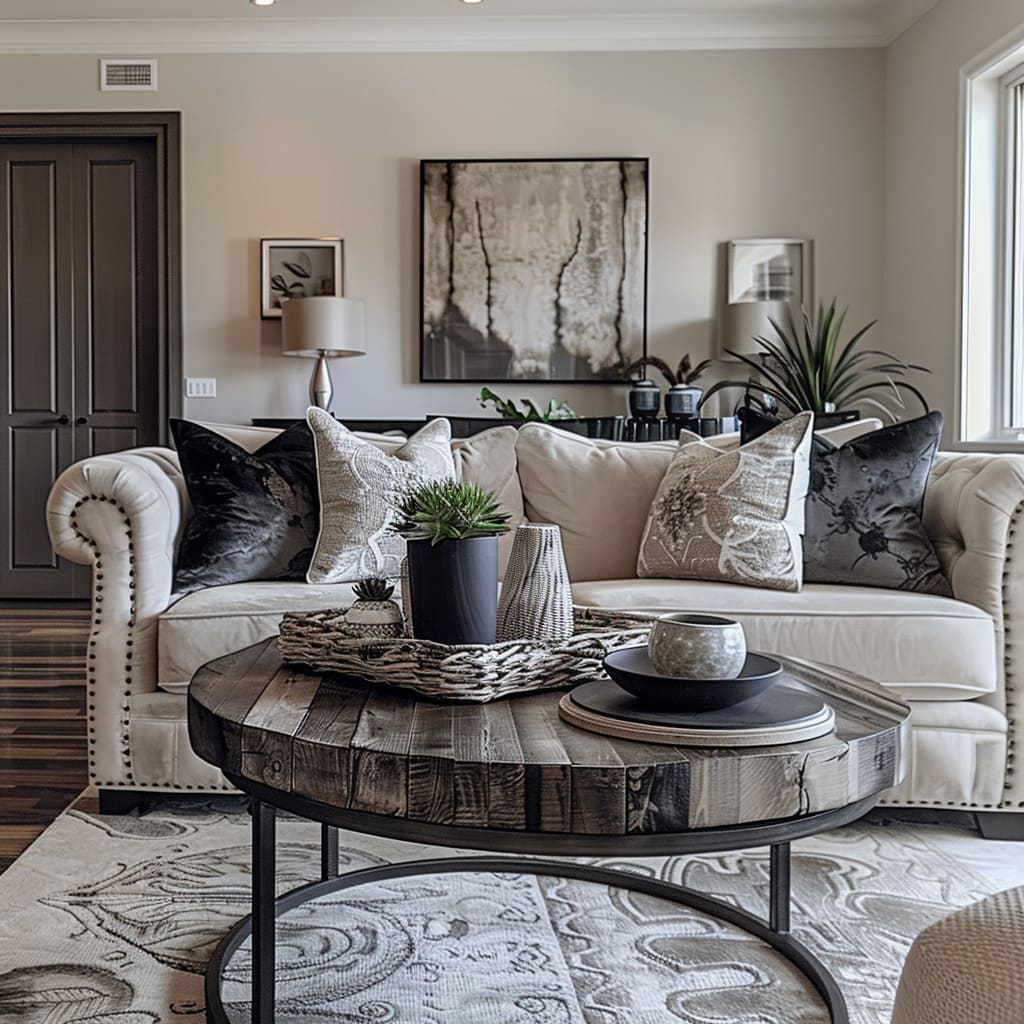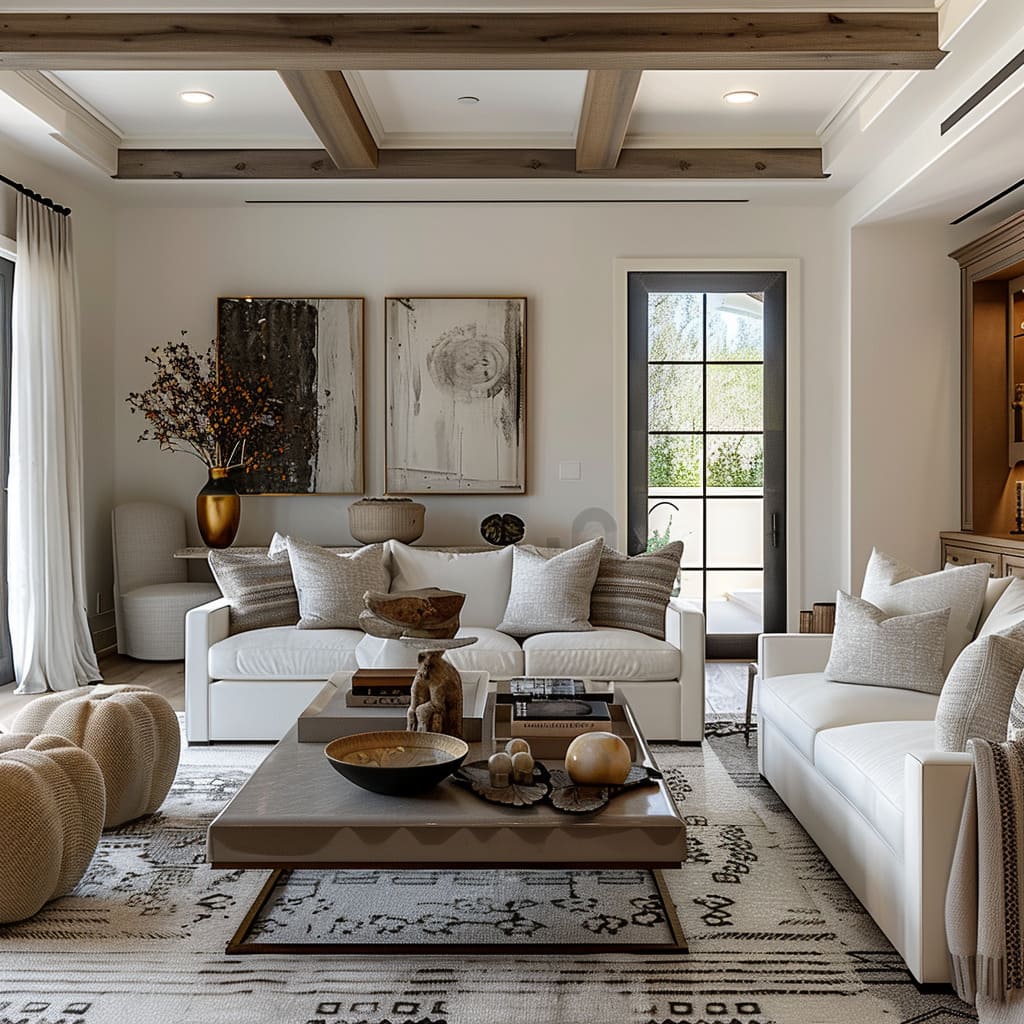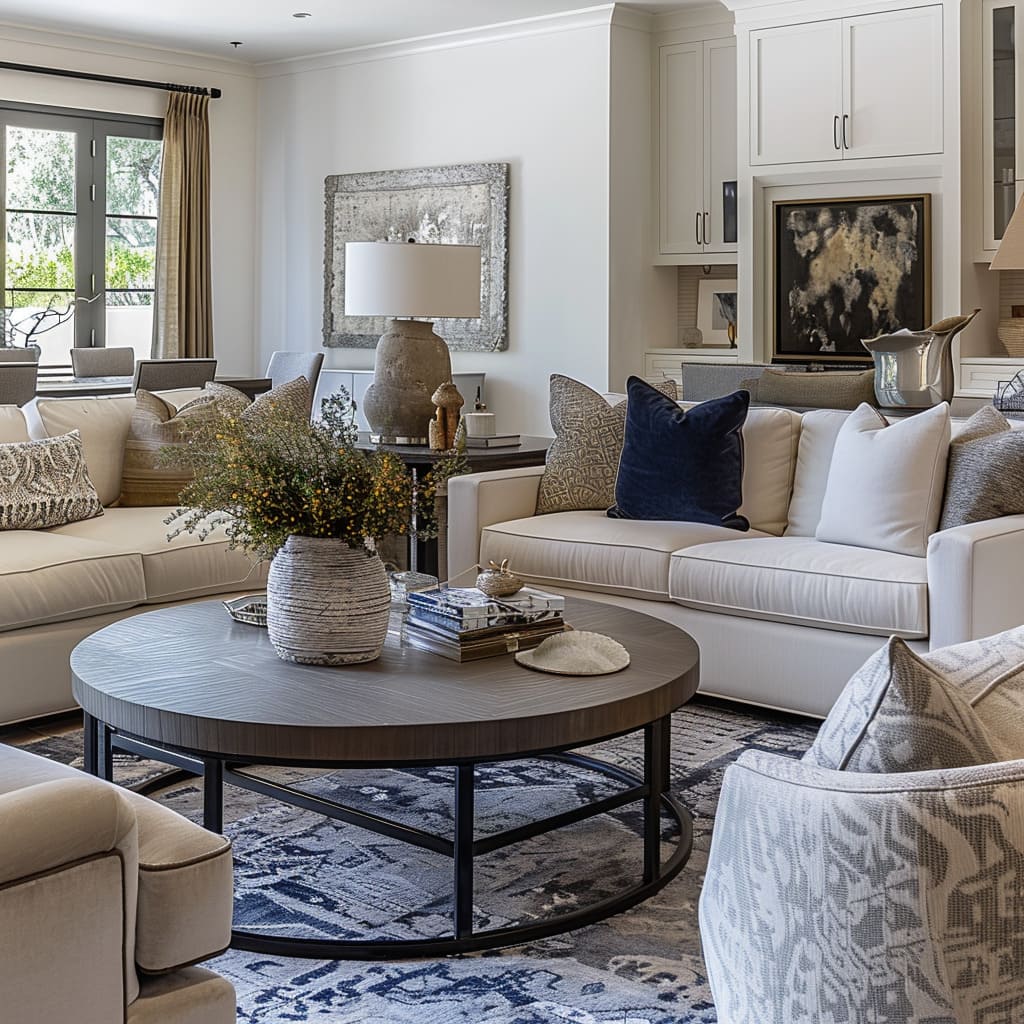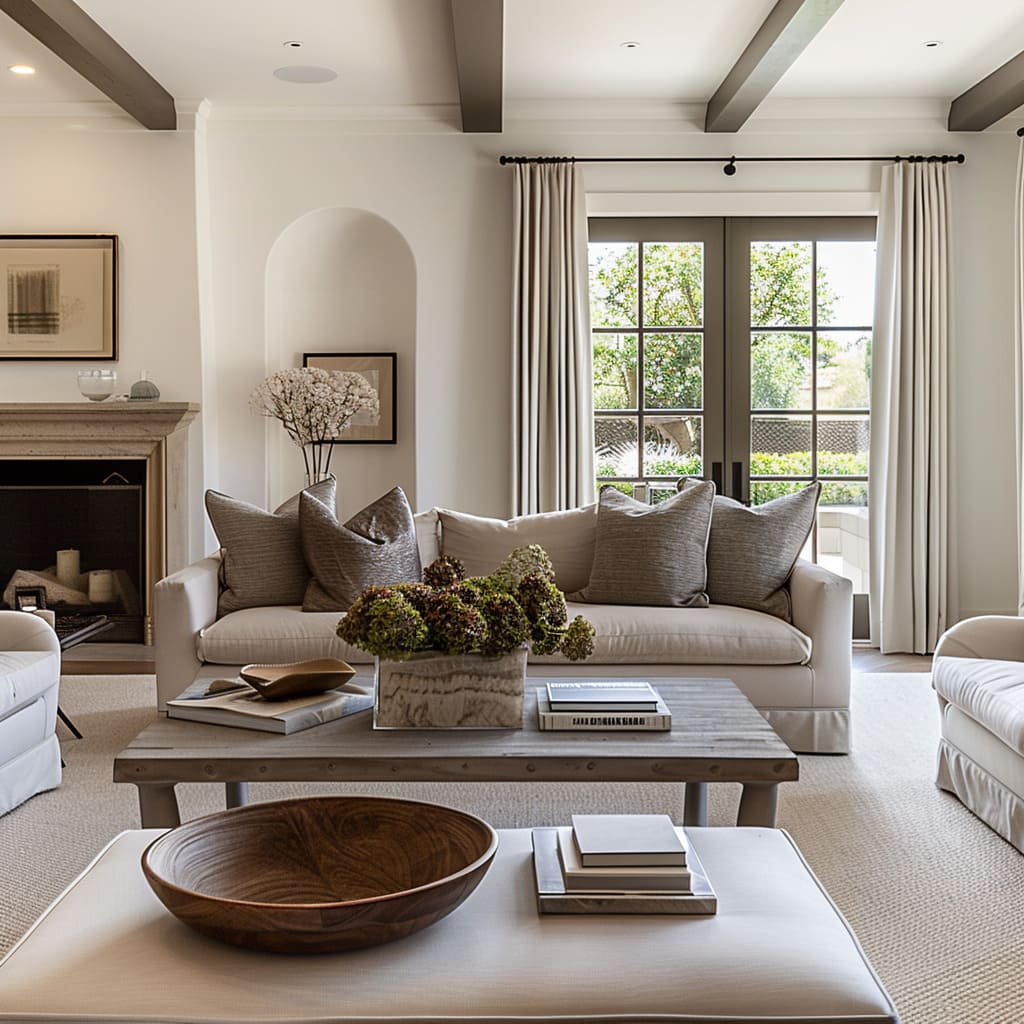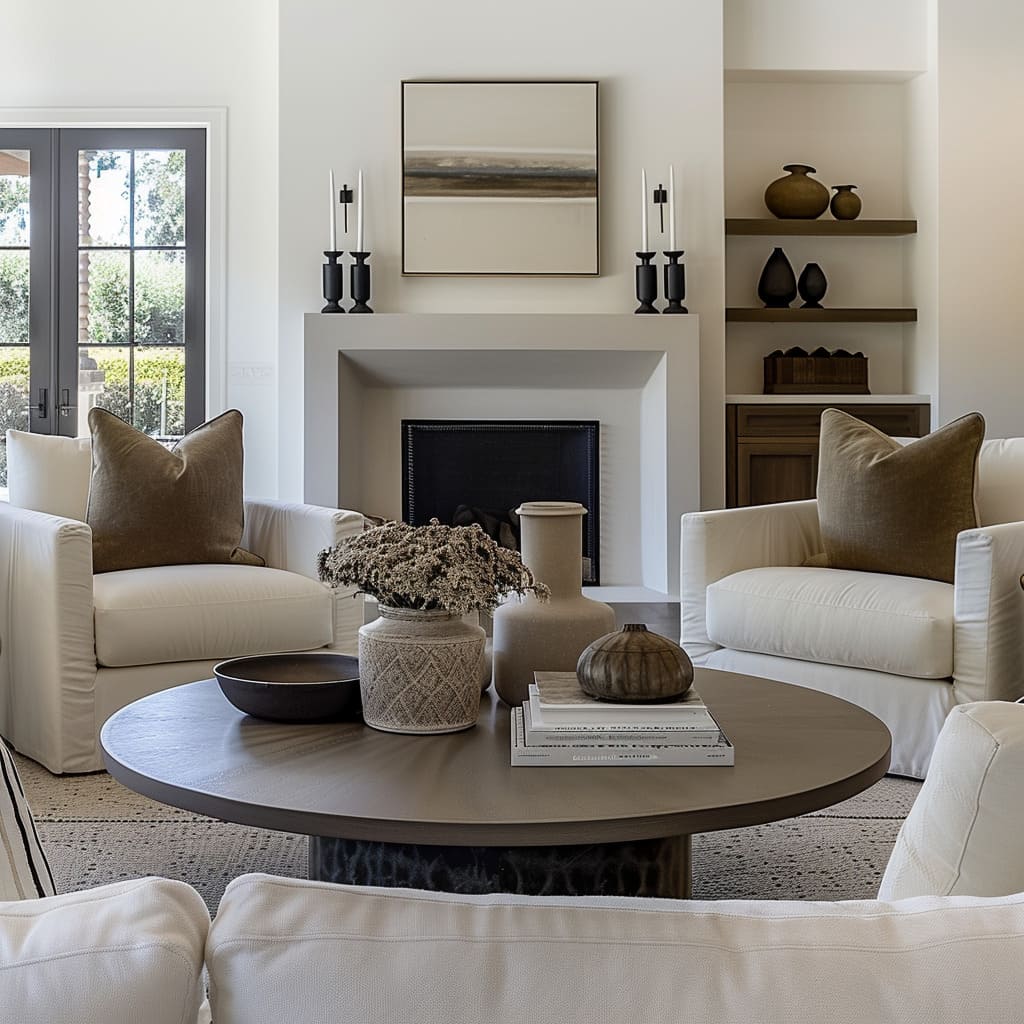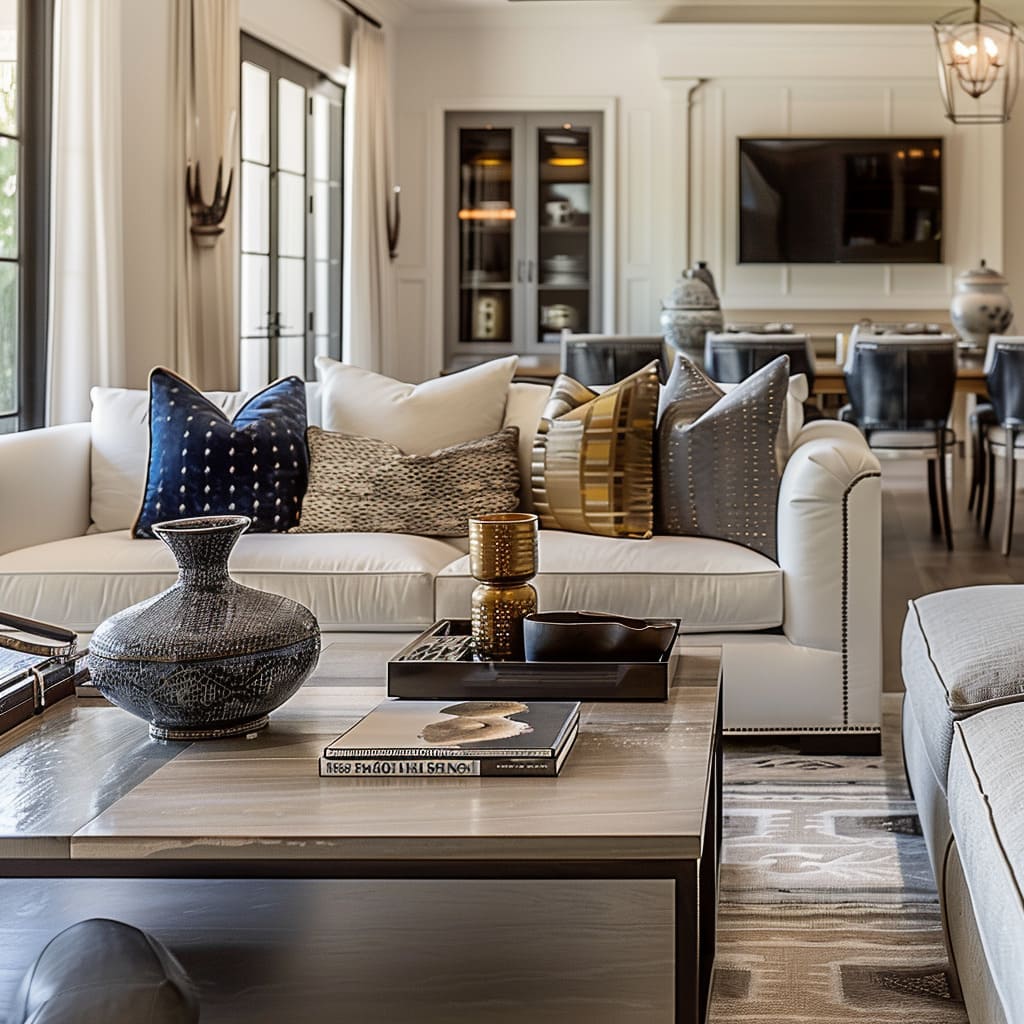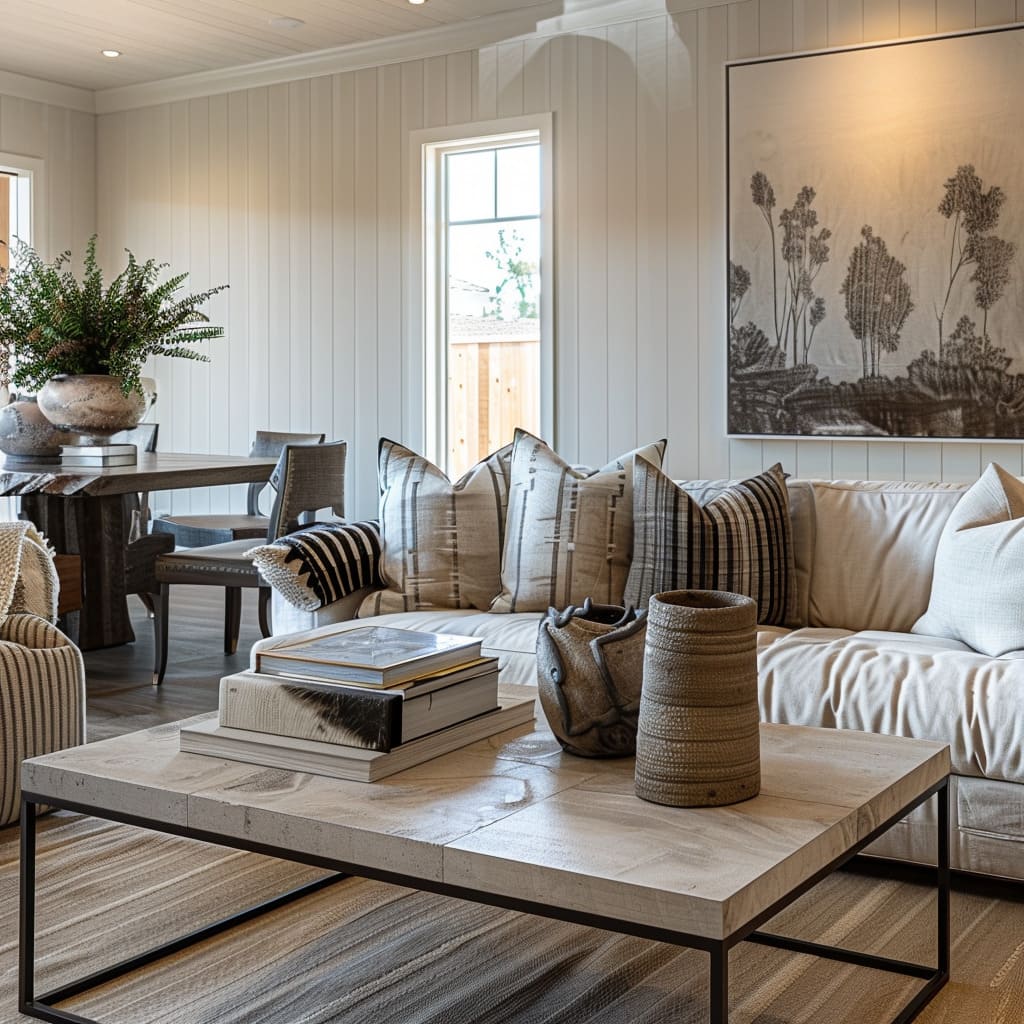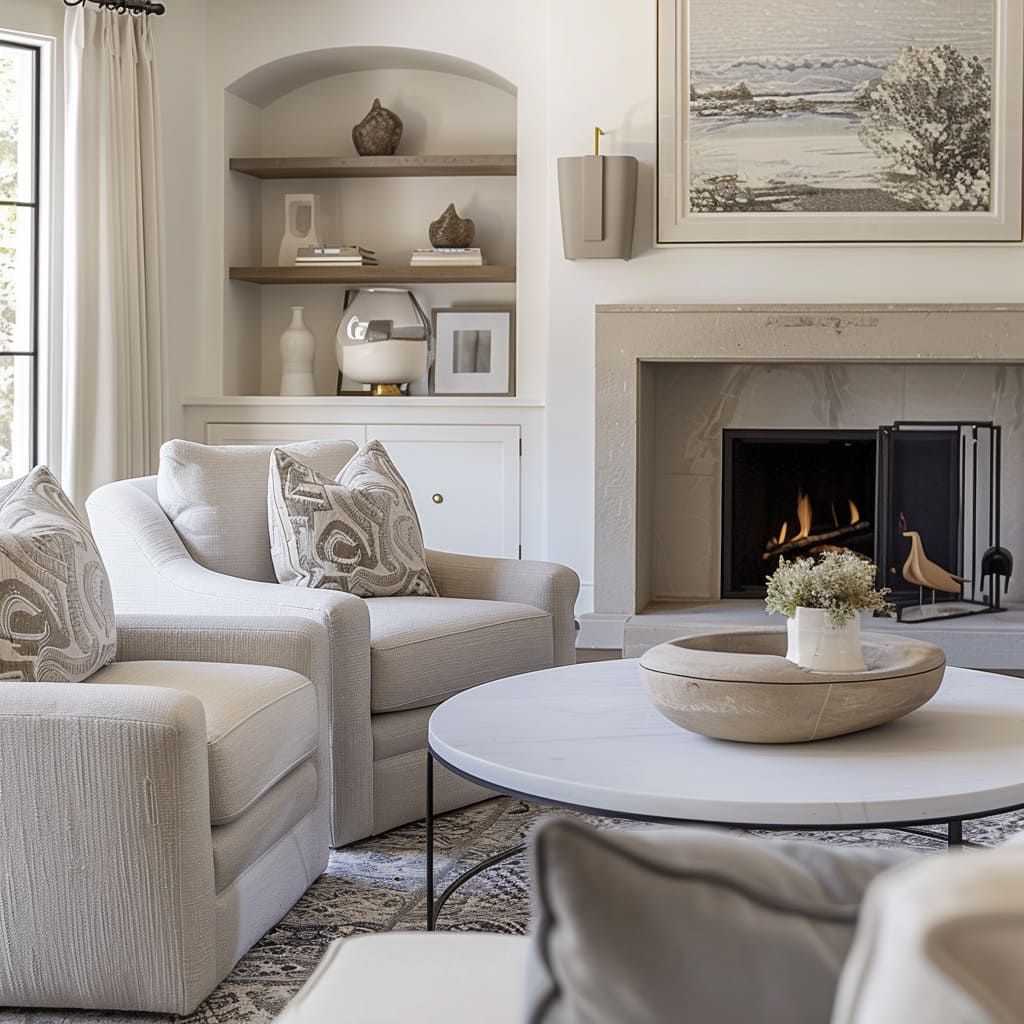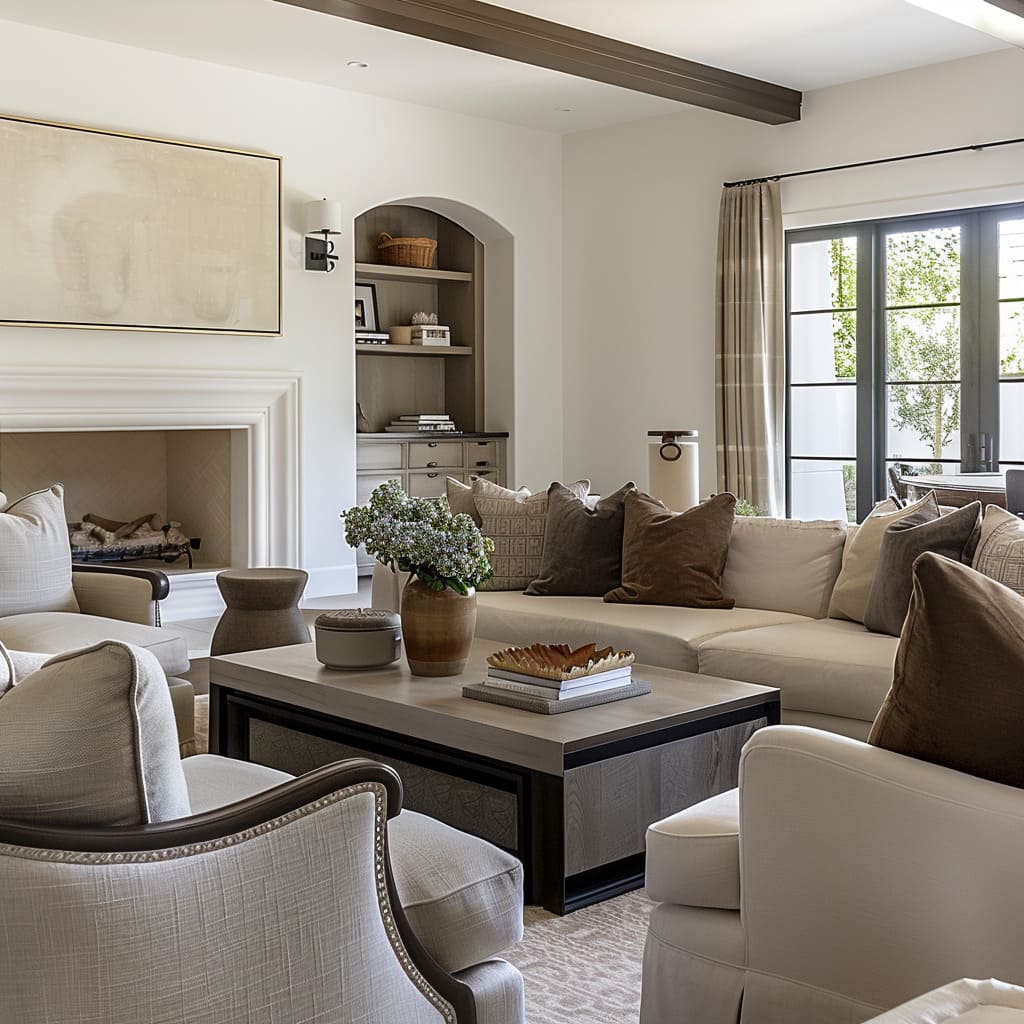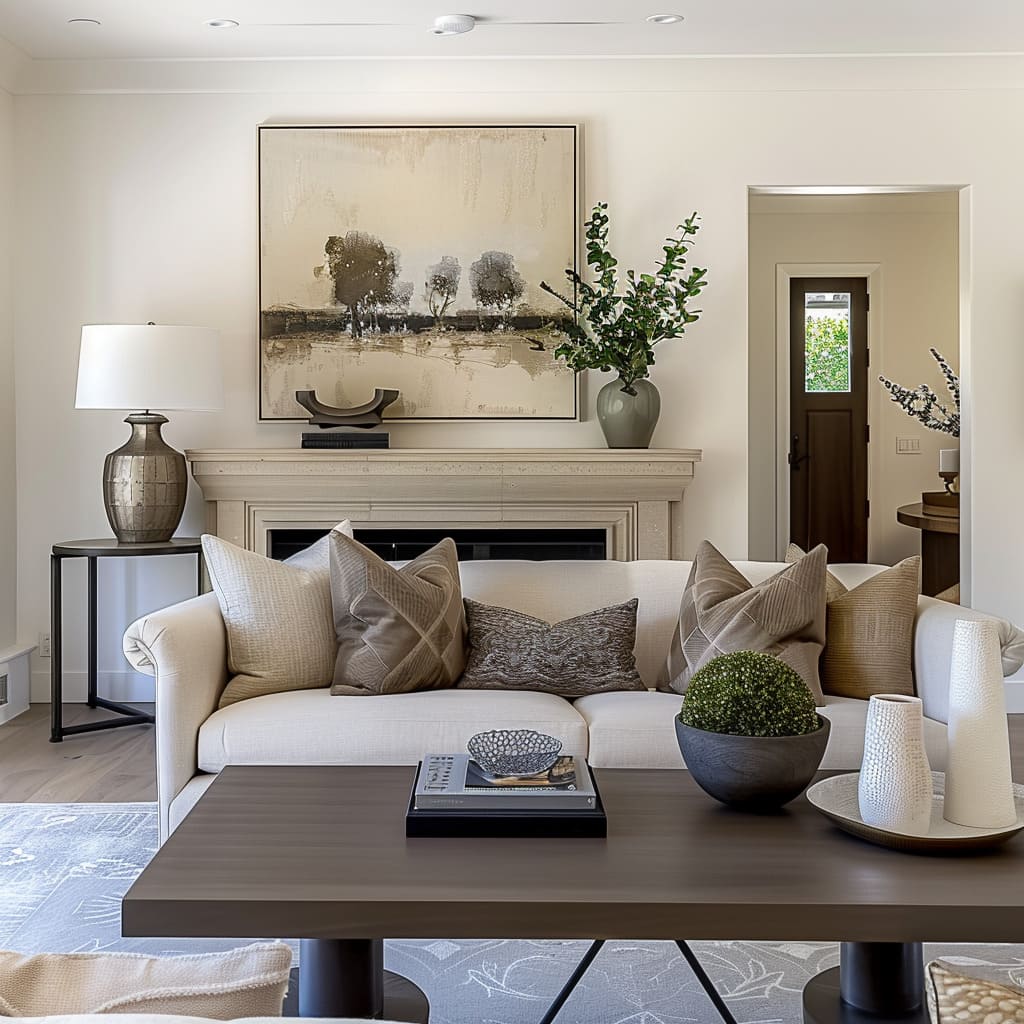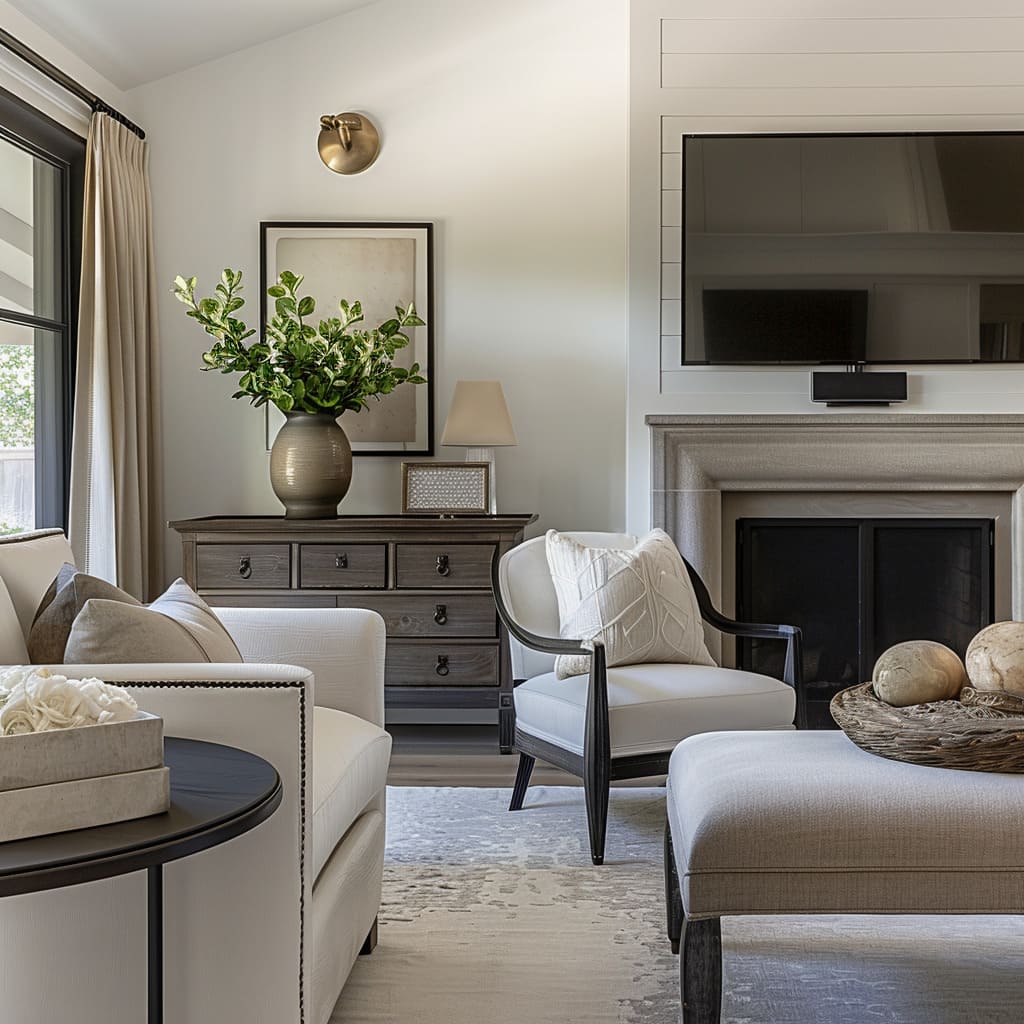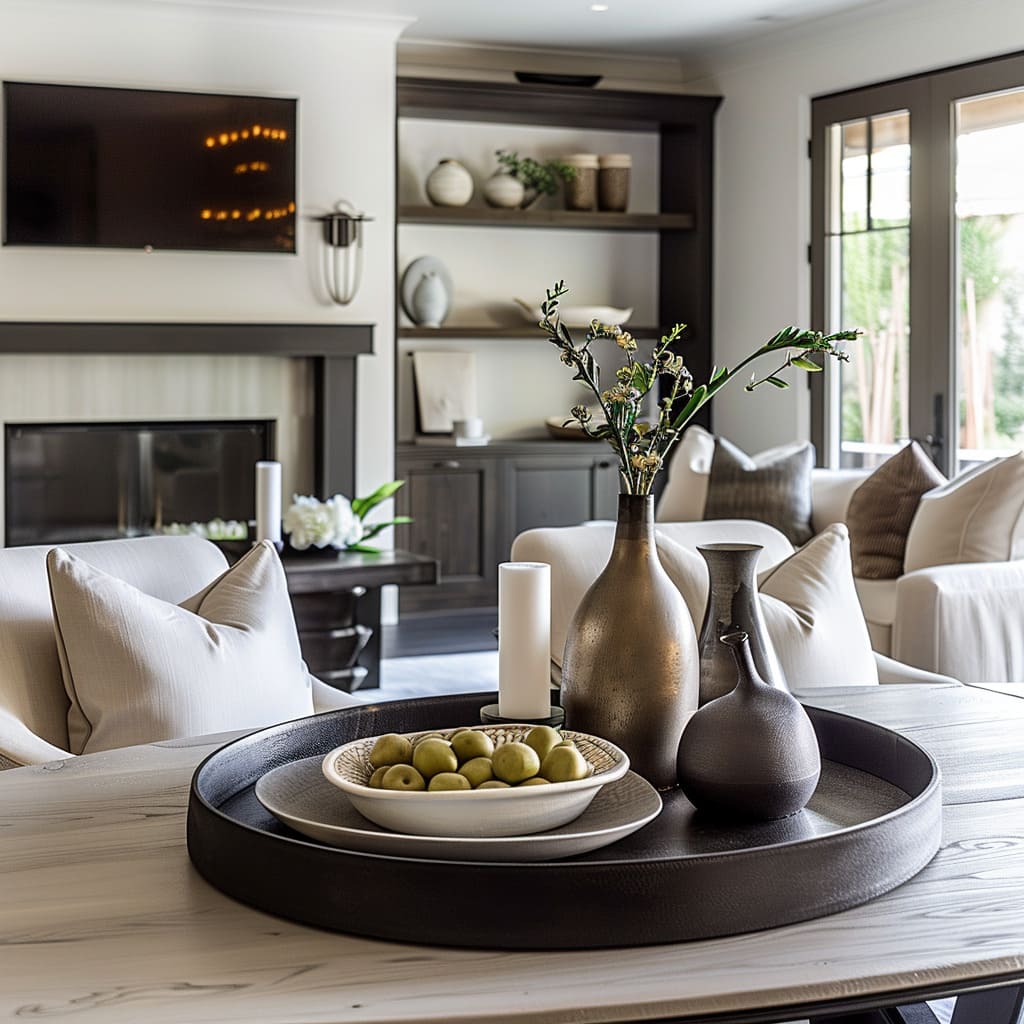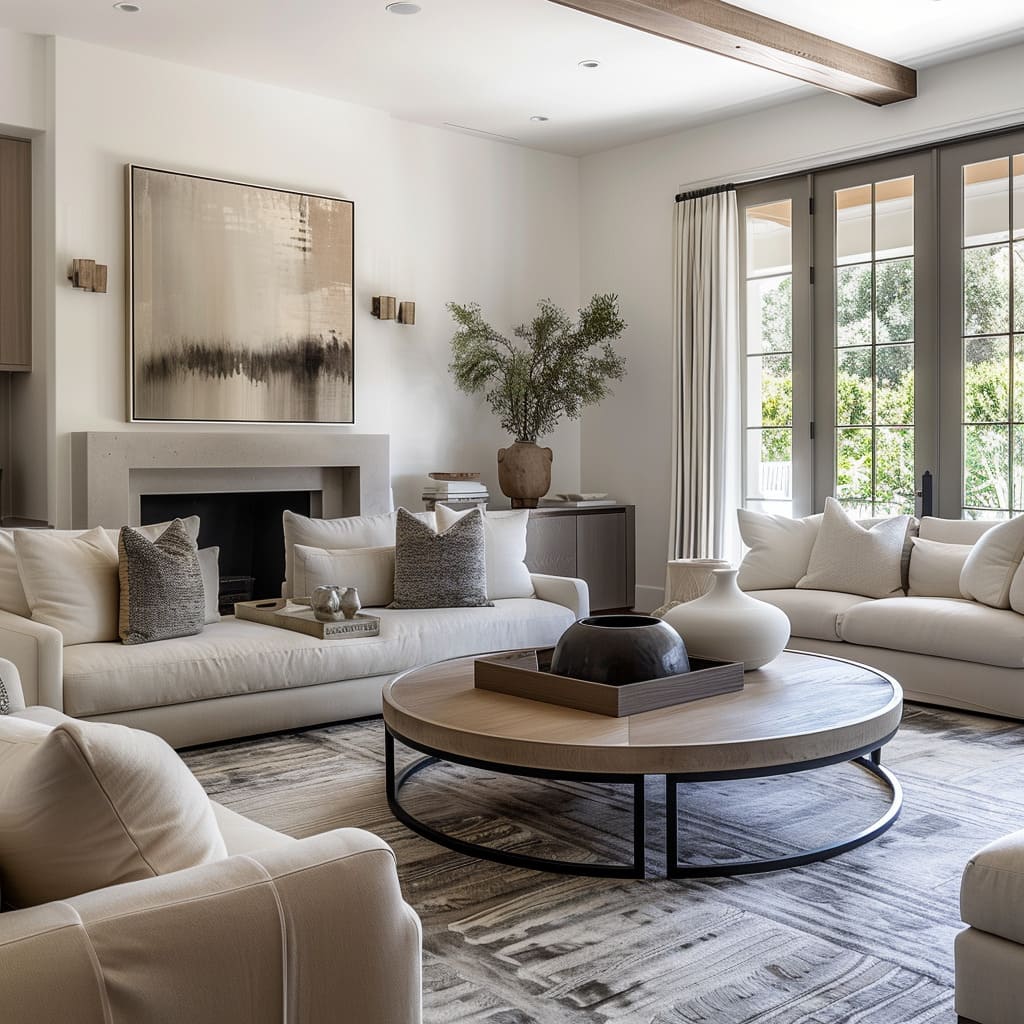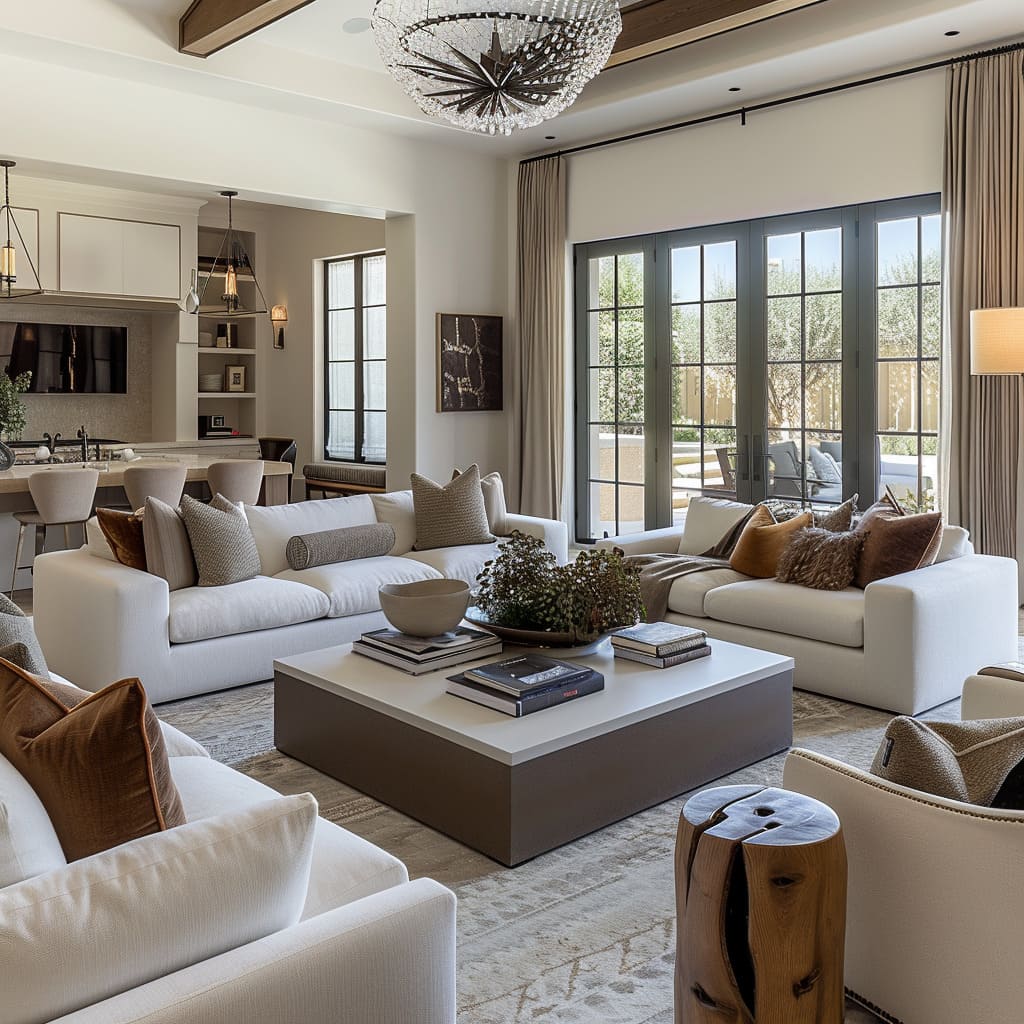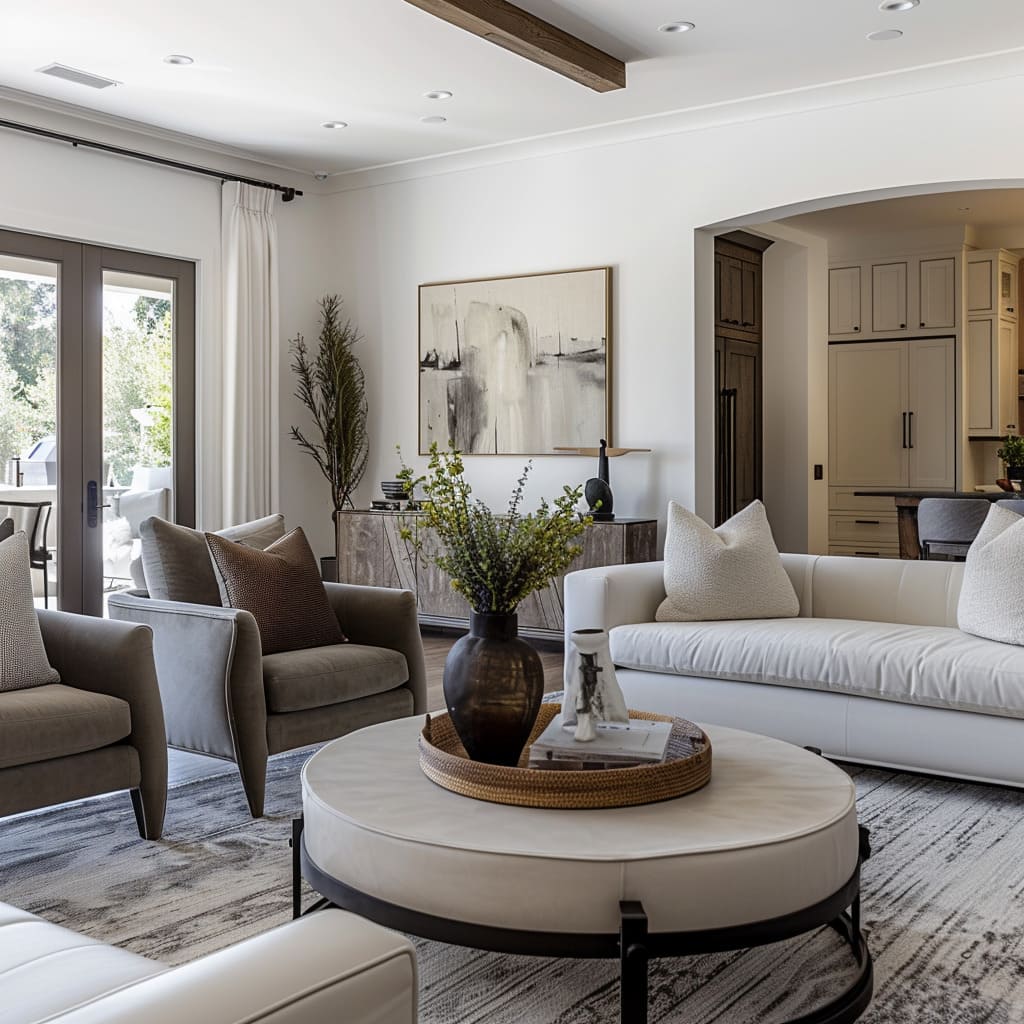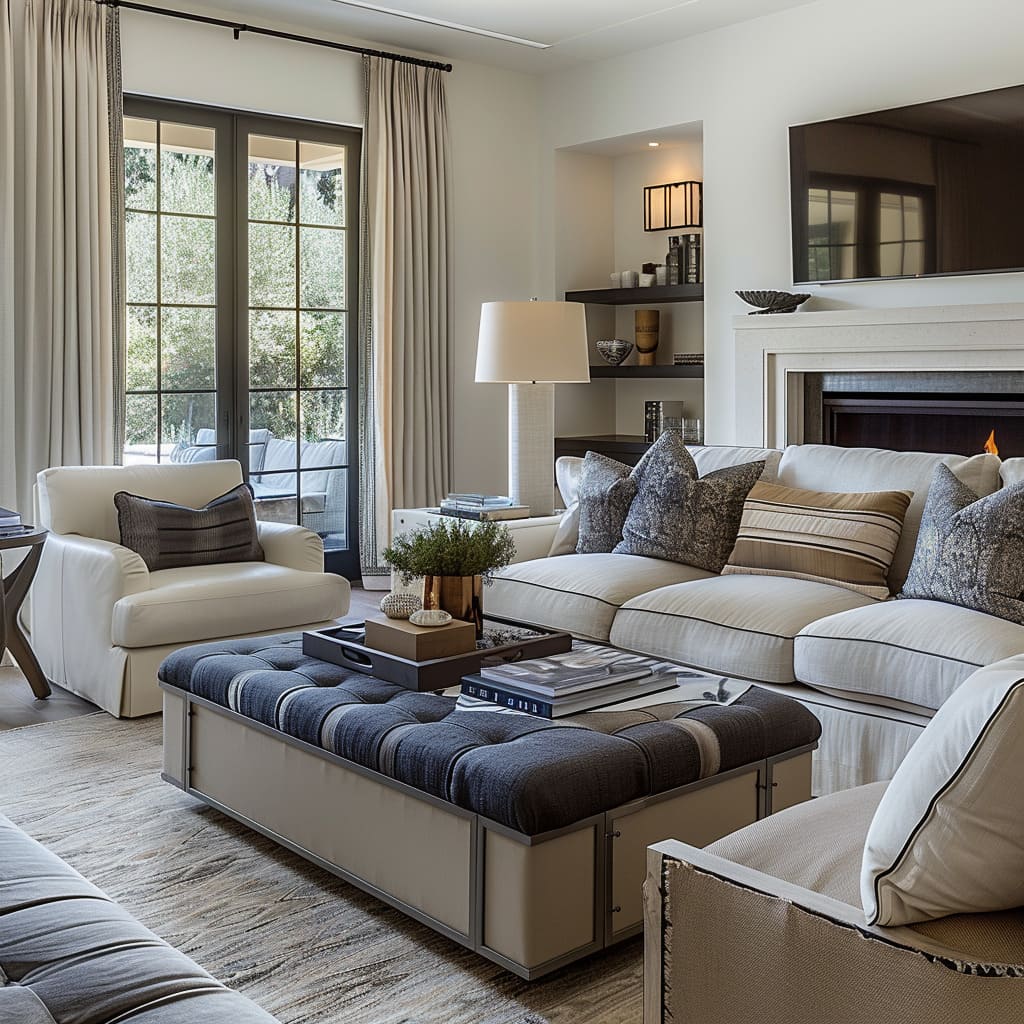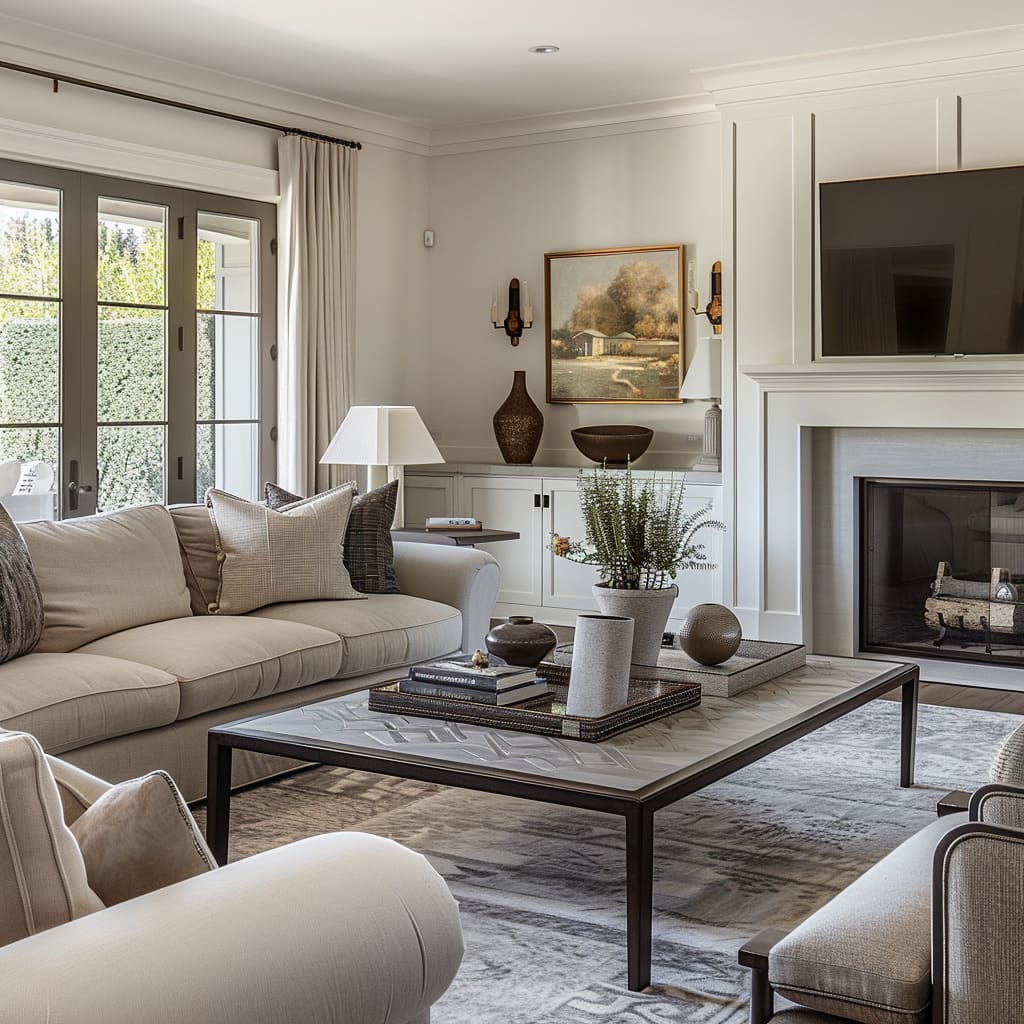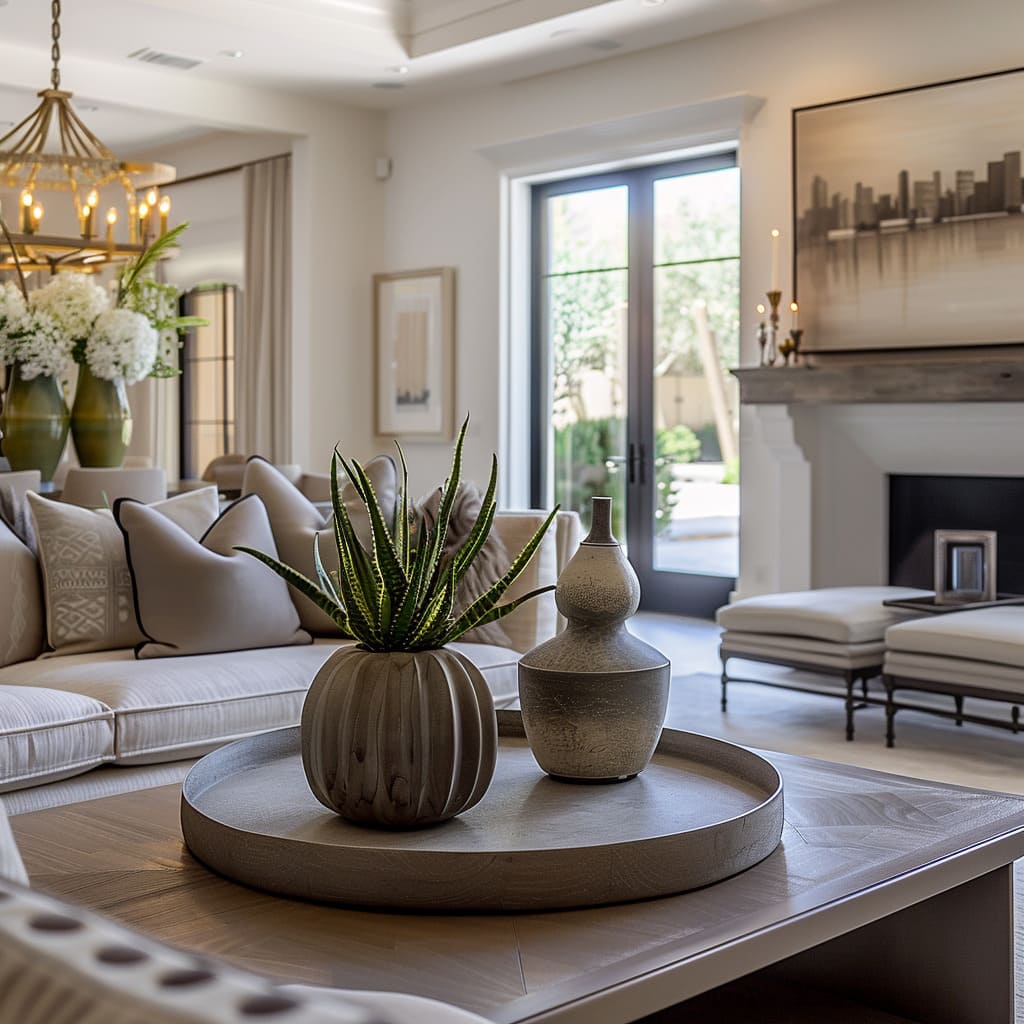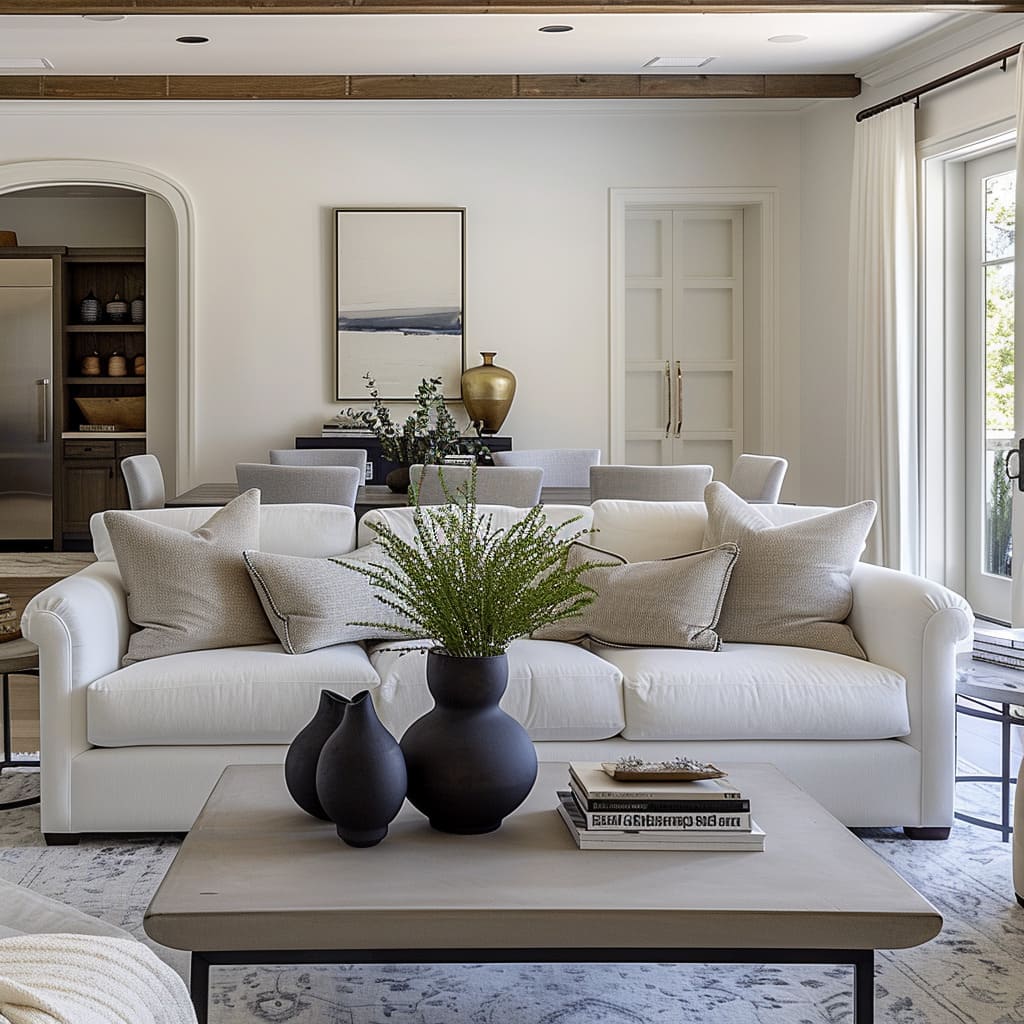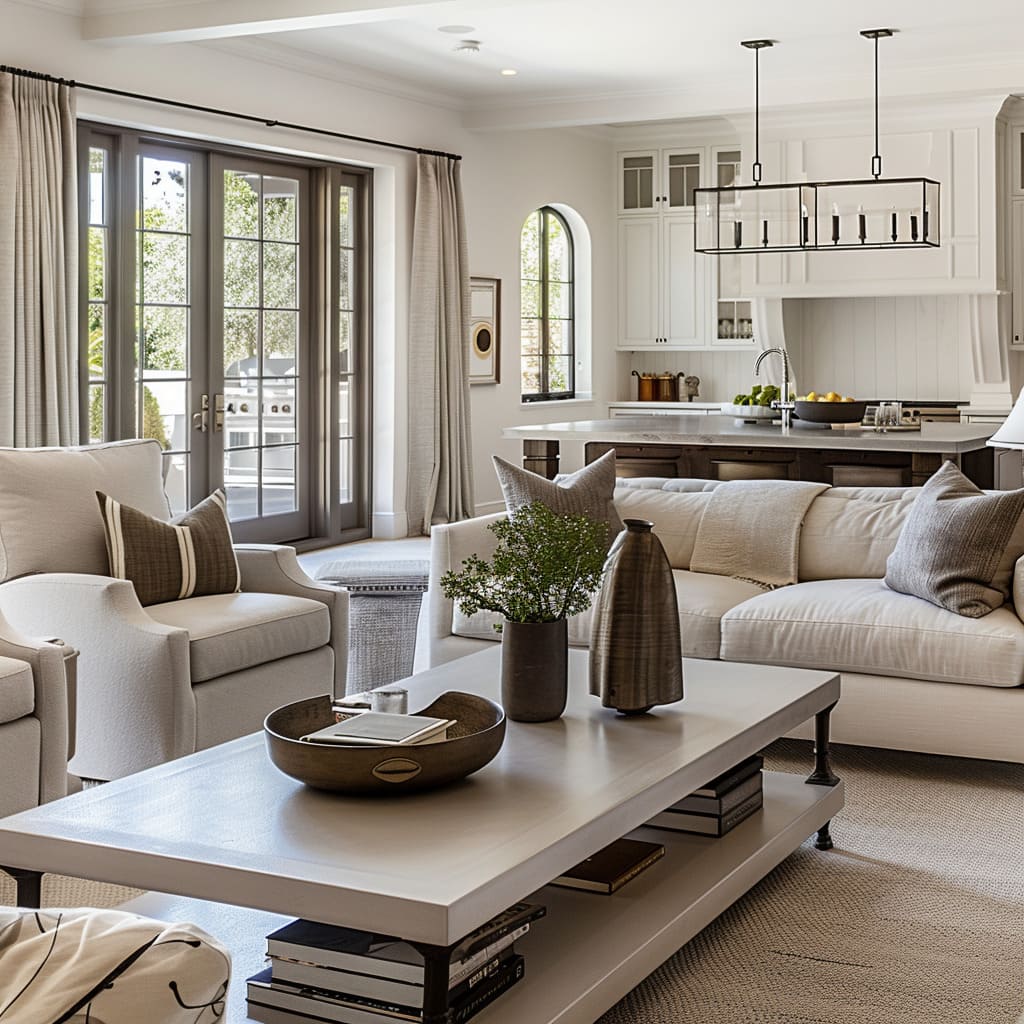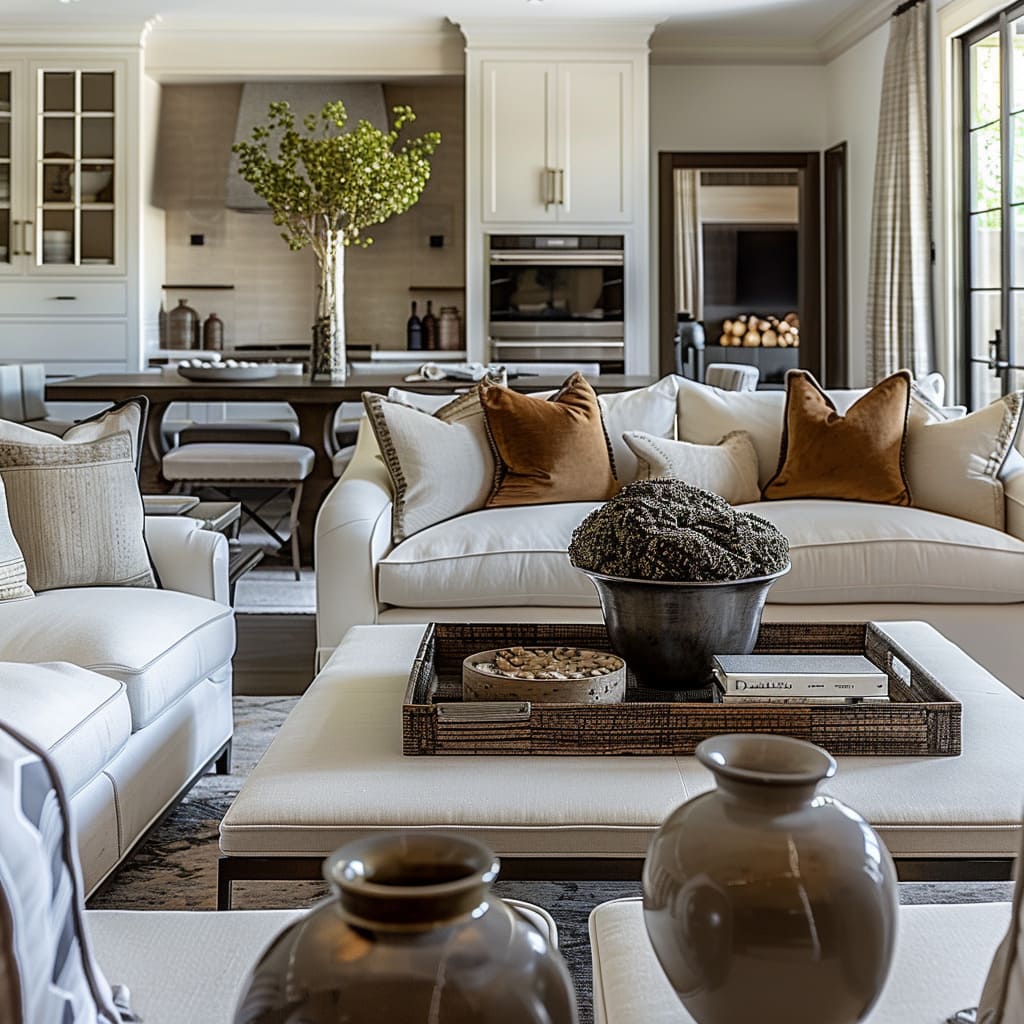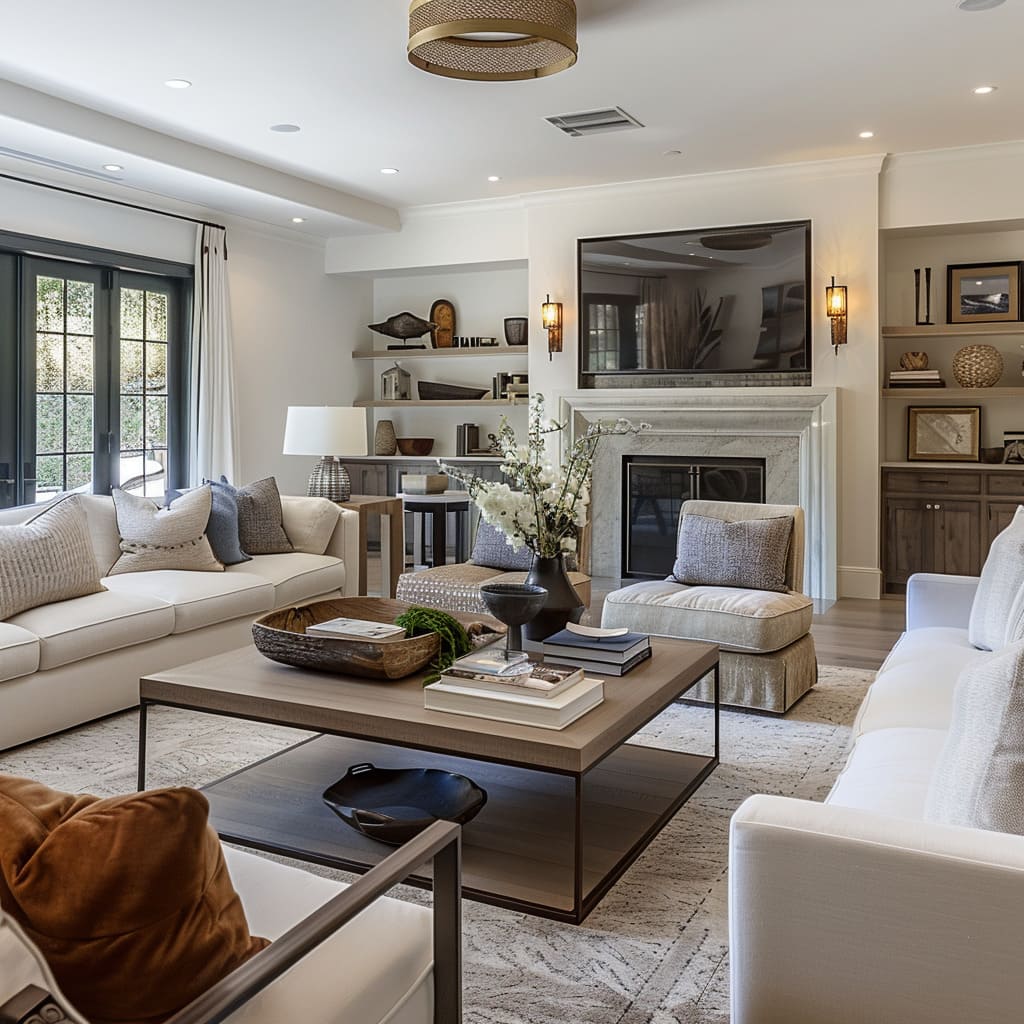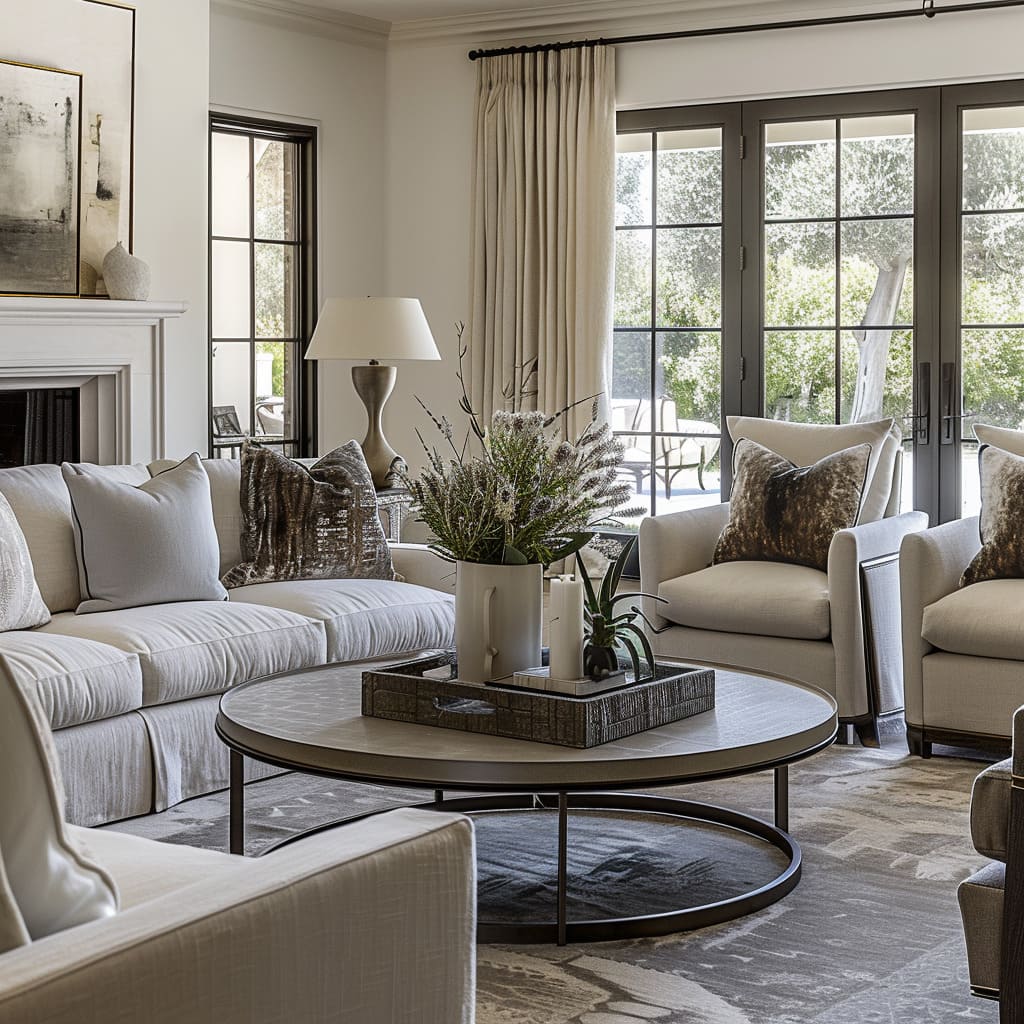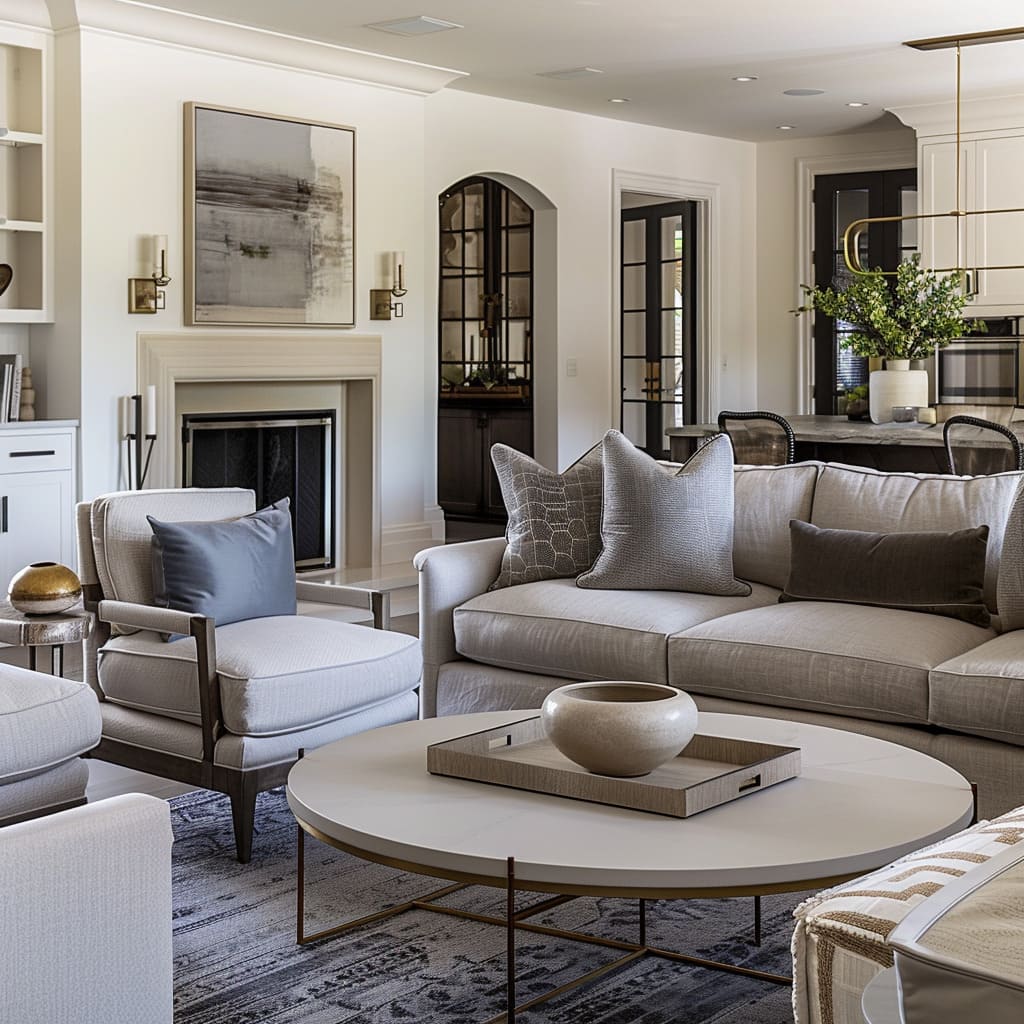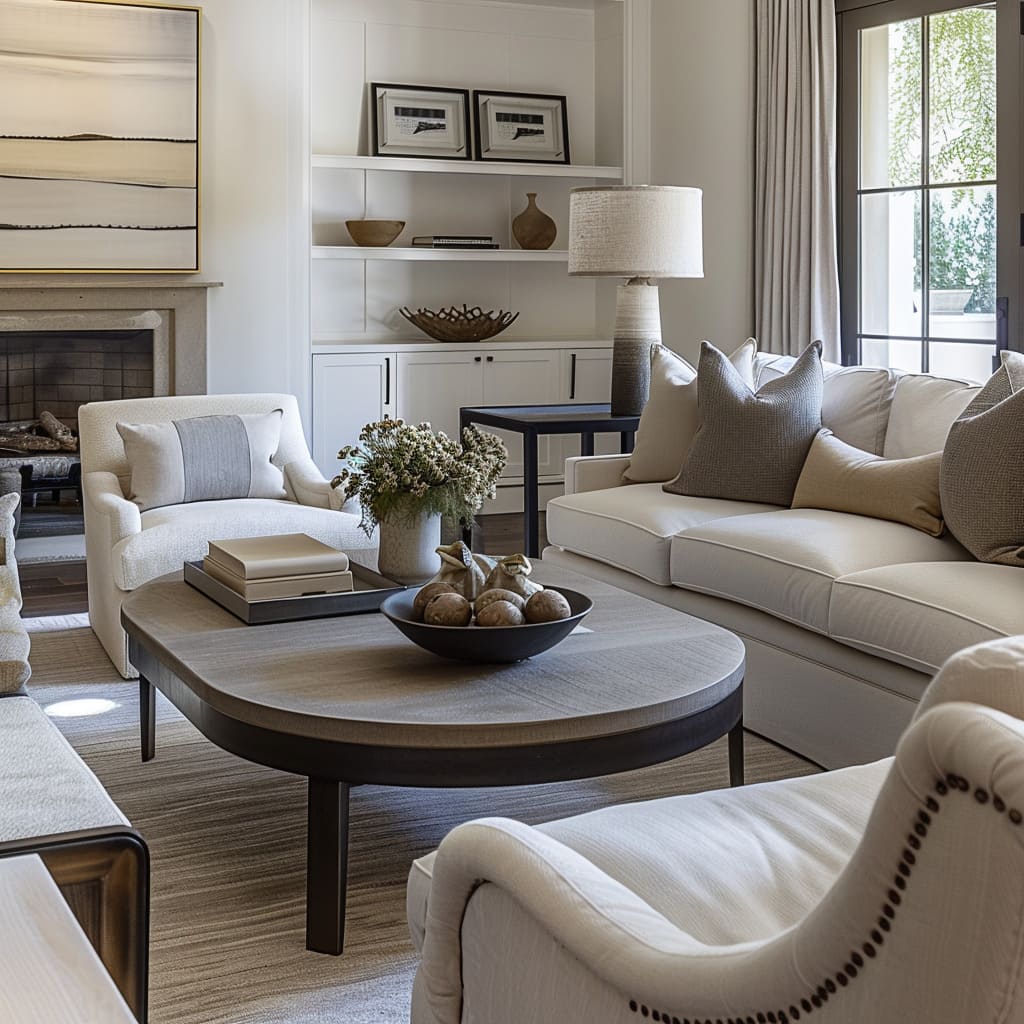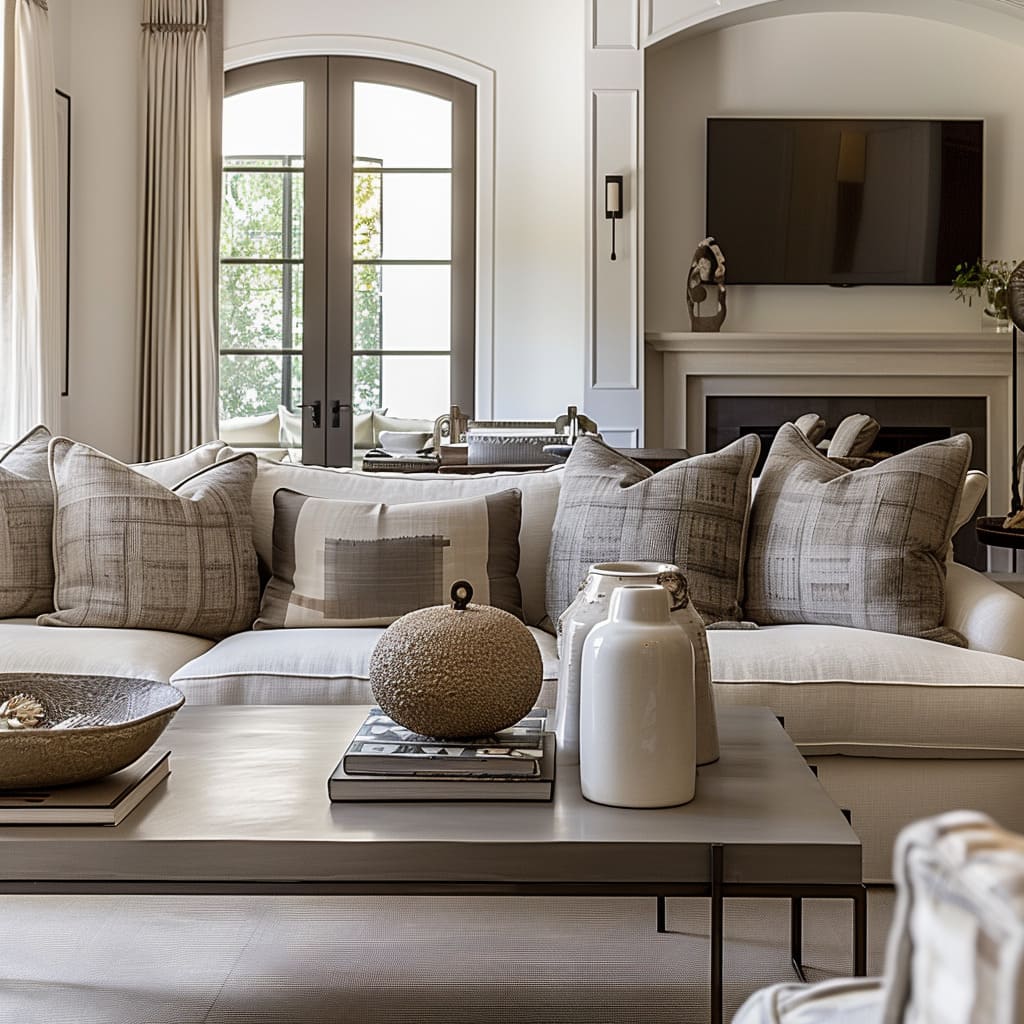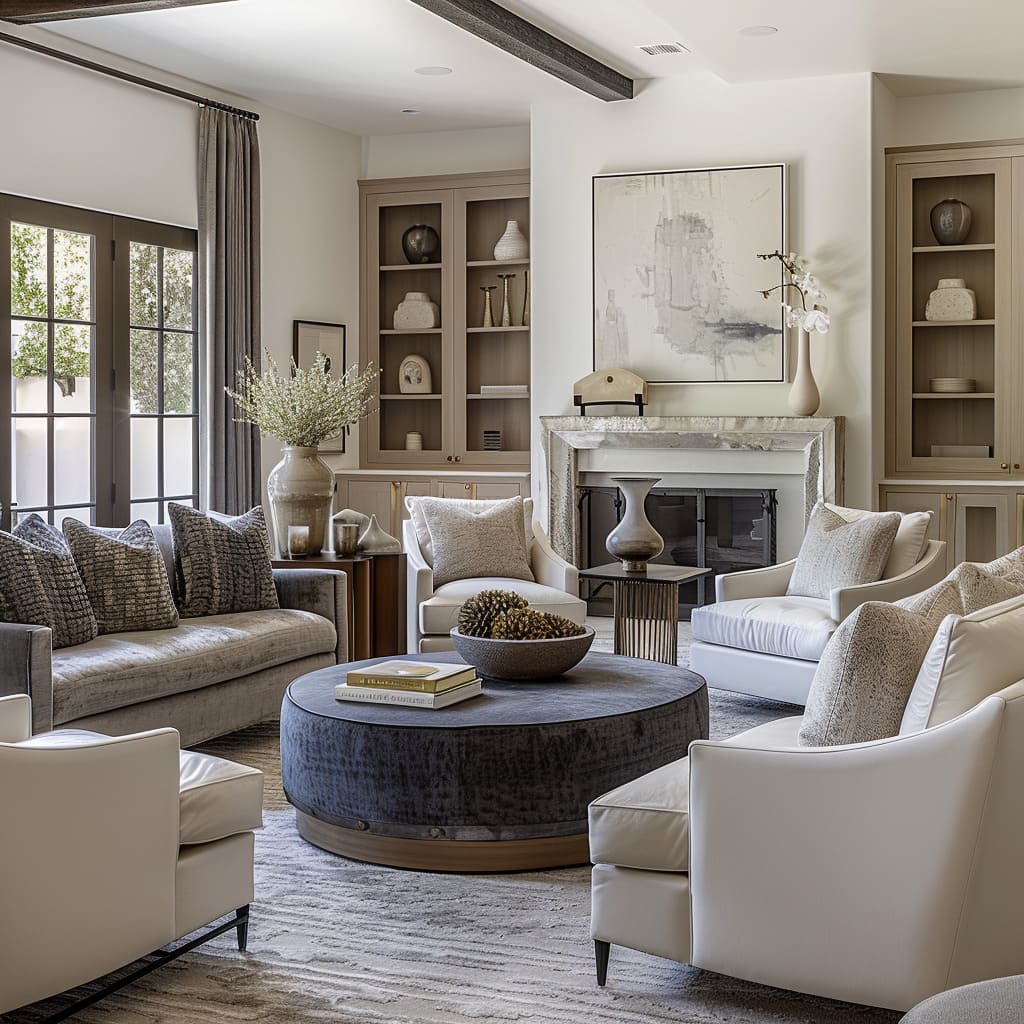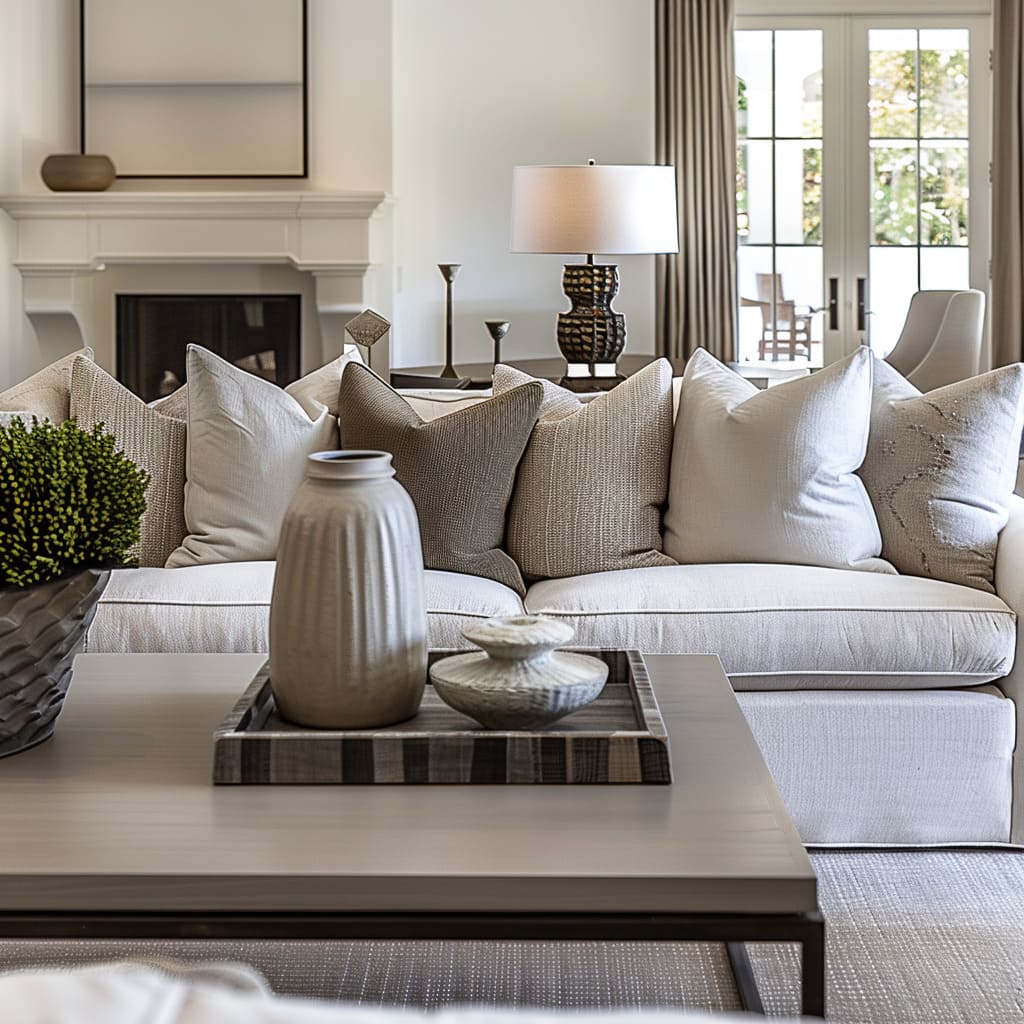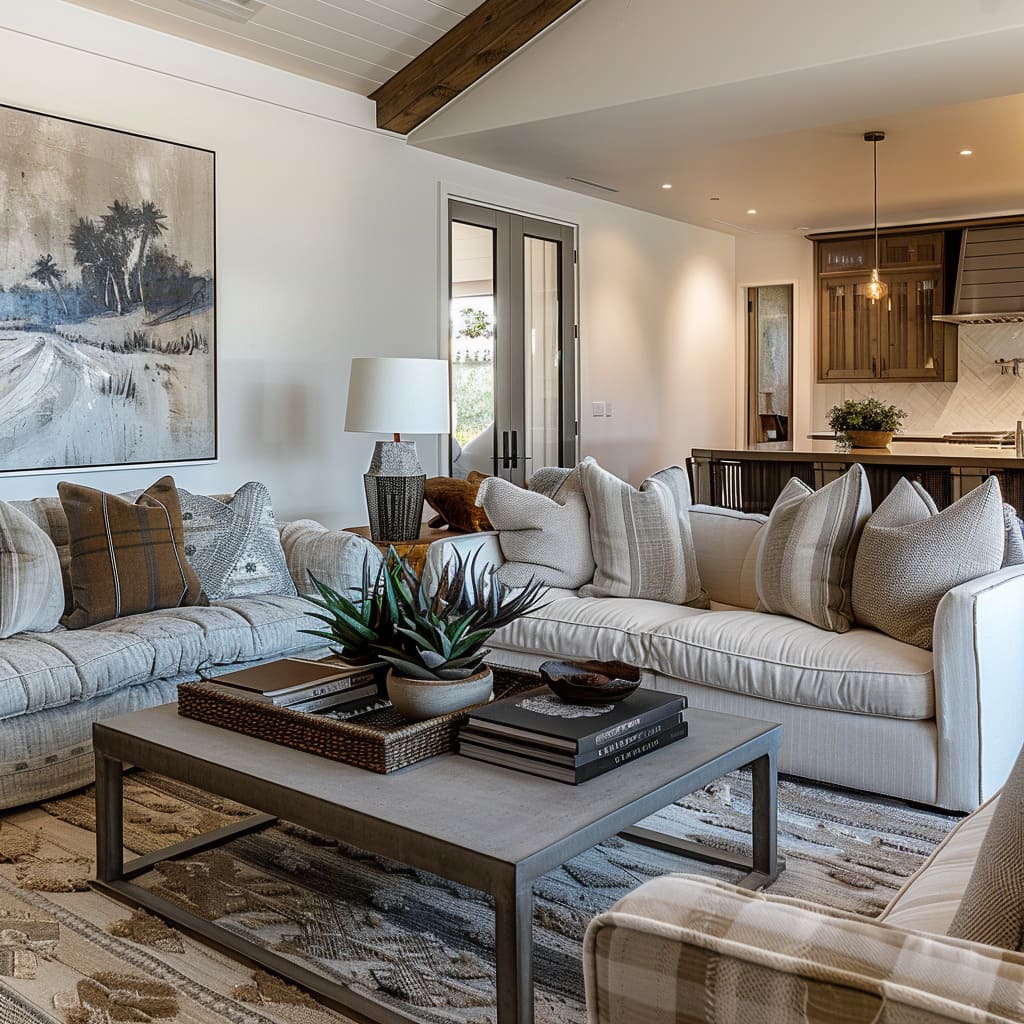In a world where every square inch speaks volumes about the dweller’s taste, the art of interior design becomes a critical narrative of personal style. It is the architectural foundations and symmetry that introduce us to the elegance of a space, beckoning us to take a closer look at the harmonious arrangements that are as functional as they are aesthetically pleasing.
As we embark on a journey through this meticulously curated environment, each room unfolds as a chapter in a design story, where balance meets beauty, and every detail is an echo of both the past and the present.
Architectural Foundations and Symmetry
The architectural foundations of a space often set the stage for its aesthetic and flow. The symmetrical layout and emphasis on structural elements within a room are crucial for creating balance and harmony.
This approach to design considers the inherent beauty of architecture, where every element has its place, and each detail is meticulously planned to contribute to a cohesive whole.
Read our article on the distinctive features of rustic farmhouse aesthetics and explore how these elements influence modern exterior designs.
The symmetry is not merely about mirrored arrangements but also about the thoughtful integration of the room’s core features, such as windows, beams, and ceilings, which together create an environment that is both inviting and visually arresting. The following section delves into these fundamental aspects, showcasing how symmetrical layouts, architectural elements, moldings, and trims, recessed ceilings, symmetrical window panes, and wood ceiling beams are masterfully used to craft spaces that exude elegance and a well-grounded sense of place.
Symmetrical Room Layouts
A balanced approach to arranging furniture and decor often hinges on a central focal point that anchors the room. This central focus is frequently a substantial piece of furniture or a significant design element, such as a fireplace or a large window.
Symmetry is achieved by placing matching sofas facing each other, with a central coffee table creating a conversational area. This setup is not just aesthetically pleasing but also promotes engagement between occupants of the room.
Decorative elements like throw pillows are placed in a mirror-like fashion to maintain this equilibrium, enhancing the sense of order and calm.
Emphasis on Architectural Elements
Utilization of structural features like fireplaces, beams, and archways as integral parts of the design adds depth and character to the interiors. Fireplaces serve as a natural gathering spot, framed by art or a television, while the mantelpiece becomes a platform for decorative objects.
Archways lead the eye through the space and create a seamless flow from room to room. Exposed beams, often in natural wood tones, draw attention to the ceiling and contribute to a rustic yet elegant atmosphere.
Use of Molding and Trim
Crown molding, baseboards, and wainscoting add depth and detail to the spaces, often painted in white or complementary hues to the wall color for a subtle contrast. These details frame the walls and ceiling, emphasizing the room’s height and adding a layer of sophistication.
The molding and trim are consistent in style and thickness, contributing to a unified look throughout the home. The trim around doors and windows is particularly noticeable, showcasing meticulous craftsmanship.
Recessed Ceilings
The use of tray or coffered ceilings to add a sense of height and grandeur. These architectural features create dimension and can be used to demarcate different areas within an open-plan space.
Recessed lighting within these ceilings offers a soft illumination that highlights the ceiling’s geometry without overwhelming the space with light. The contrast between the recessed areas and the surrounding ceiling contributes to the room’s dynamic, layered look.
A central lighting fixture within the recessed ceiling becomes a statement piece in itself.
Symmetrical Window Panes
Windows with symmetrical grids or panes are a signature design element in these interiors, contributing to the balanced and well-proportioned aesthetic. These windows not only allow for natural light to enhance the space but also act as a visual statement with their pattern and symmetry.
The use of mullions in a consistent, grid-like pattern adds a traditional architectural element to the rooms, offering both charm and character. The symmetry of the window panes is often echoed in the arrangement of furniture and decor within the room, creating a cohesive look that’s pleasing to the eye.
Moreover, the clean lines of the window frames add a sense of order and tidiness to the space.
Detailing and Accents
The artistry of an interior space is often defined by its details and accents. These elements are the touches of character—the brushstrokes on a canvas—that transform a room from a mere space to a place of beauty and personality.
In this section, we explore how the nuanced art of detailing and accenting comes to life through the placement of artwork, the strategic use of books as both literature and decoration, and the proportional selection of décor. It’s here that vases, trays, and even the purposeful display of firewood speak to a narrative that is both practical and aesthetically driven.
From the subtlety of elegant door hardware to the visual poetry of decorative moldings and the mindful curation of accessories, each aspect is deliberately chosen to enhance the room’s visual and tactile experience. Let’s delve into how these carefully considered details contribute to the unique tapestry of the home’s design story.
Low-hanging Artwork
Art pieces strategically hung at eye level act as focal points within a room, drawing the eye and encouraging a sense of personal connection with the art. This thoughtful placement fosters an intimate atmosphere, making the room appear more accessible and tailored to human scale.
The artwork varies from abstract paintings to modern prints, each piece selected to complement the room’s color scheme and design theme, adding character and depth to the walls they adorn.
Book Arrangements
Books are not just for reading; they are used creatively as decorative elements throughout these spaces. They may be stacked to form bases for other decorative objects, lined up to create visual rhythm on shelves, or casually placed on tables to suggest an environment that values culture and learning.
Their spines can add a pop of color or a harmonious blend into the palette of the room, and their placement is always in a visually pleasing manner that balances the aesthetics with functionality.
Scaled Decor
In these living spaces, each decorative item is thoughtfully chosen to maintain proportion with the room’s size, ensuring a balanced and harmonious look. The designers have carefully avoided clutter by selecting furniture and accessories that complement the scale of the room, making certain that each piece contributes to a well-composed aesthetic.
In larger rooms, statement pieces like oversized lamps or large-scale artwork are used to fill the volume without overwhelming the senses. Conversely, in more compact areas, smaller items are chosen to enhance the space without contributing to a feeling of crowding.
Vase Collections
These interior spaces showcase thoughtful groupings of vases and bowls, creating collective focal points that draw the eye and add a layer of sophistication. These collections are often arranged by height, color, or material, forming an attractive display that enhances the room’s design narrative.
In some rooms, the vases are of a similar style but vary in size to create a dynamic composition, while in others, a mix of textures and materials adds depth and interest. These groupings are not only visually compelling but also offer versatility, as they can be rearranged or swapped out with the seasons or according to the homeowner’s preferences.
Decorative Trays
More than mere organizational tools, these trays are styled deliberately to serve as vignettes that encapsulate the room’s aesthetic. Positioned atop ottomans, side tables, or coffee tables, they gather a collection of objects into cohesive, intentional displays.
Whether cradling a stack of glossy art books, a cluster of candles, or an array of botanicals, these trays contribute to the overall elegance and personality of the room. They add a layer of texture and contrast, often featuring materials such as polished wood, reflective metal, or woven fiber, each tray adding to the richness and tactile quality of the space.
Decorative Firewood Storage
In these rustic-inspired interiors, firewood is not only a practical necessity but also an element of decor. Stacked neatly by the fireplace or in a specially designed niche, the firewood becomes a focal point that evokes a sense of warmth and tradition.
It reflects a thoughtful design approach that integrates functionality with style, as the natural wood tones and textures contribute to the room’s cozy ambiance. The placement of the firewood is both convenient for use and aesthetically pleasing, often becoming a conversation starter.
Elegant Door Hardware
In these spaces, the hardware serves as jewelry for the doors, featuring sleek, modern handles and knobs that blend seamlessly into the design while providing a subtle, sophisticated touch. The hardware often boasts a matte or brushed finish, contributing to a sense of understated luxury.
Decorative Moldings
Meticulously crafted decorative moldings accentuate the built-in furniture and architectural details of the room, adding layers of texture and intricacy. These moldings may present in classic profiles, lending a timeless elegance that bridges the gap between traditional charm and contemporary design.
Carefully Curated Accessories
Accessories in these rooms are selected with precision, ensuring each piece contributes to the overall aesthetic without causing visual clutter. From vases with simple lines to thoughtfully chosen books and sculptural pieces, each accessory complements the room’s color scheme and design narrative, enhancing the space’s balance and harmony.
Furnishings and Large Features
Within every well-appointed interior lies a selection of key pieces that define the space’s character and functionality. This section focuses on the substantial elements of design—furniture and fixtures that not only fill a room but give it purpose and personality.
From the warm embrace of wood tones that enrich the environment to the conversation pieces that dangle elegantly overhead, each of these features is integral to the room’s narrative.
We explore how the careful choice of furnishings and large-scale features, such as oversized artwork and statement rugs, contribute to a room’s sense of place, anchoring the design in both tradition and modernity. It’s here in the interplay of soft edges with built-in structures, and the harmony between the essential side tables and the grandeur of statement chandeliers, that a room truly becomes a home.
Let us delve into the foundational elements that offer both comfort and splendor, grounding the airy dance of design in tangible, touchable reality.
Warm Wood Tones
The wooden elements in these interiors serve as a rich visual and textural contrast to the neutral color palette, infusing the space with a feeling of warmth and natural beauty. The flooring, with its broad planks of oak or walnut, provides a durable and timeless foundation for the room’s design.
Furniture pieces, such as coffee tables and consoles, are often chosen for their natural wood finishes, showcasing the grain and color variation that only wood can provide. Additionally, wooden beams on the ceilings or wooden frames around mirrors and artwork add an earthy touch that complements the more refined textures in the room, such as plush upholstery or smooth metal finishes.
Oversized Artwork
In the featured rooms, large paintings or prints create a focal point and convey the personality of the space. They are often positioned over key pieces of furniture like a sofa or mantelpiece, drawing the eye and tying together the room’s color scheme or thematic elements.
The artwork itself ranges from abstract compositions that add a modern touch to more traditional landscapes that offer a sense of tranquility. The scale of these pieces is important; they are large enough to be engaging from across the room but not so overpowering as to dominate the space.
This balance ensures that the artwork complements rather than competes with the rest of the room’s design.
Statement Chandeliers
The chandeliers selected for these rooms are more than just light fixtures; they are works of art that enhance the overall aesthetic. Whether it’s a modern interpretation with sleek lines and LED lights or a more traditional crystal design that scatters light beautifully, these chandeliers are positioned to command attention and draw the gaze upward.
Beyond their primary function of illumination, they add an element of luxury and grandeur, often serving as a conversation starter. The chosen chandeliers also reflect the room’s scale, ensuring that they fill the vertical space without overwhelming the room’s proportions.
Traditional Furniture Styles
The furniture pieces resonate with history, featuring classic lines and details like button tufting, nailhead trim, and elegantly turned legs. These elements hark back to traditional design but are updated to fit the modern context of these rooms.
For example, a Chesterfield sofa maintains its iconic quilted leather design but is reimagined in a more contemporary shape. Similarly, wingback chairs, historically known for their formality, are crafted with softer lines and plush materials to ensure comfort without sacrificing their stately presence.
Transitional Styling
A thoughtful balance between old and new permeates these rooms through transitional styling, which combines the best elements of traditional and contemporary design. This is evident in the sleek lines of the furniture that are softened by the use of classic fabrics, or in the way modern art pieces are framed by traditional wainscoting.
The effect is a seamless integration of ages, where cutting-edge design nods respectfully to the past, creating a setting that feels both familiar and refreshingly new.
Anchoring Rugs
Large area rugs are essential in defining the seating areas within a room, grounding the furniture, and unifying the design elements. They bring a sense of completeness and cohesiveness, making the space feel more inviting and lived-in.
The rugs add a layer of warmth, both visually and physically, to the floors, which is particularly appealing in rooms with hard flooring surfaces. Their textures vary from smooth and plush to woven and rustic, contributing to the overall aesthetic and tactile experience of the space.
Soft Edges
The furniture in these spaces is designed with comfort in mind, featuring soft corners and gentle edges that invite relaxation and casual living. Sofas and chairs often boast plush cushions and are upholstered in soft-to-the-touch fabrics, creating an inviting atmosphere where one can easily lounge for hours.
The rounded contours of the furniture also contribute to a safe and approachable environment, free from the harsh lines that can make a space feel more formal or imposing. This choice reflects a trend towards spaces that prioritize comfort and ease, aligning with a lifestyle that values both aesthetics and well-being.
Built-in Shelving
The shelving melds into the structure of the room, offering a sophisticated solution for storage and exhibition without disturbing the space’s cohesive design narrative. These shelves are crafted to fit the precise dimensions of the space, maximizing functionality without compromising style.
Each shelf is a stage for a curated selection of books, vases, and artifacts that tell a story or evoke a memory, contributing to the room’s lived-in feel. The shelving units, often flanking significant architectural features like fireplaces or archways, draw the eye with their symmetry and the thoughtful arrangement of their contents.
Side Tables
Strategically positioned side tables enhance the functionality and symmetry of these living areas. These tables are placed within arm’s reach of seating arrangements, offering a convenient surface for setting down drinks, books, or decorative items like table lamps and planters.
They come in various shapes and styles, from round drum tables to rectangular nesting tables, and are often made from materials that complement other elements in the room, such as wood, metal, or glass. The careful placement of these tables helps to maintain balance in the room’s layout and ensures that the seating areas are both comfortable and practical.
Lighting and Textural Contrast
Light and texture play pivotal roles in shaping the atmosphere of any space, creating a symphony of highlights and shadows that can alter perception and mood. In this section, we dive into the design strategies that artfully employ lighting and textural contrasts to bring a room to life.
Window treatments and mirrors work in unison to control and amplify the dance of light within the space, while the interplay of various materials invites the eye and touch to explore.
The strategic placement of freestanding lamps enhances the functionality of the room, providing not just light, but also serving as sculptural elements that underscore the space’s aesthetic. Against this backdrop, the understated neutrality of window frames and the cozy allure of throw pillows round out a design philosophy that values comfort as much as visual appeal.
Here we’ll see how these elements converge to create environments that are not only lit but also enlivened by a rich tapestry of textures and tones.
Window Treatments
The windows are framed with treatments that complement the room’s design and function. Draperies hang gracefully, often from rods that are works of art in their own right, contributing to the room’s overall elegance.
These curtains serve not only to filter light and provide privacy but also to introduce additional layers of texture and color. The fabric chosen often coordinates with the room’s soft furnishings, such as throw pillows and upholstered seating, ensuring a cohesive look that ties the room together.
The fullness of the curtains adds a sense of luxury and acoustic softness to these well-appointed spaces.
Use of Mirrors
Mirrors are cleverly used in these designs to maximize the sense of space and reflect both natural and artificial light, making the rooms appear larger and brighter. They are often placed opposite windows to bring in more daylight or across from beautiful views to duplicate the outdoor connection.
Beyond their functional role, mirrors are selected for their frames—whether ornate and gilded or simple and sleek—to align with the room’s aesthetic. The strategic placement of mirrors can also highlight other design features by reflecting them into view, ensuring that no angle of the room’s thoughtful composition goes unnoticed.
Contrasting Textures
These spaces are a tactile showcase, with a mix of materials inviting touch and adding visual interest. Smooth leather couches are juxtaposed with woven fabric chairs, creating a dialogue of textures that is both visually appealing and inviting.
Wood with visible grain becomes a key element, appearing in large coffee tables and exposed ceiling beams, further emphasizing the blend of textures. This variety in surfaces is carefully selected to prevent monotony in the neutral color scheme, ensuring that each piece contributes its unique feel to the collective harmony of the space.
Freestanding Lamps
Floor and table lamps are strategically used in these living spaces to add depth, warmth, and ambiance. These lamps are often chosen for their sculptural quality, serving as both sources of light and as decorative elements.
They provide a layered lighting effect, which can be adjusted to create various moods within the space. Positioned next to seating areas, they offer task lighting that’s essential for reading or close work, while lamps placed in darker corners of the room help to illuminate the entire area evenly.
The lampshades also contribute to the overall color scheme and texture of the room, with materials ranging from translucent glass to opaque fabrics that can softly diffuse light.
Neutral Window Frames
The window frames, awash in subdued hues, serve not only as casements for the glass but also as subtle extensions of the walls themselves. They possess a chameleon-like quality, blending effortlessly into the surrounding wall color, which results in an uninterrupted visual flow that accentuates the spaciousness of the room.
These frames support the expansive panes that invite natural light to drench the interior, creating a serene and airy atmosphere. The neutrality of the frames complements the room’s color palette, ensuring that the views outside take center stage.
Comfortable Throw Pillows
The living spaces are accentuated with a variety of throw pillows that offer both aesthetic appeal and comfort. These pillows vary in size, color, texture, and pattern, contributing to a layered and inviting look on sofas and chairs.
They serve a dual purpose to provide support and increase comfort for the occupants, and to add a pop of color or a touch of elegance to the room’s design. The mix of materials—from velvety fabrics to woven textures—adds depth and interest, while the selection of hues complements the overall color scheme of the living space.
As the final words of this design narrative come to a close, it is clear that the mastery of a space is in the unity of its elements—from the bold statement pieces to the smallest of accents. The thoughtful interplay of light with texture, the strategic placement of each furnishing, and the dialogue between each artful detail contribute to a living composition that is both timeless and immediate.
This is a place where design is not just seen but experienced, an environment that resonates with the rhythm of everyday life, and a testament to the notion that in the world of interior design, harmony is not just a concept, but a lived reality.


